St. Anton in summer still pulses with activity even after the snow has gone. Here’s how this world-famous destination in the tourism region of St. Anton am Arlberg in western Tirol, Austria continues its active alpine adventures.
The four-village valley of St. Anton am Arlberg is better known as the birthplace of Alpine skiing. It became an established name on the Austrian winter circuit after ski instructor Hannes Schneider put the relatively unknown sport, and the largest village of St. Anton, on the map back in the early 1900s.
The pride from pioneering the downhill ski method known as the “Arlberg technique” became an ingrained part of the culture that grew St. Anton into a prime Austrian ski resort and home to the World Alpine Ski Championships in 2001. Yet, the region is more than its snow sport allurement, which is not a blasphemous thing to say here. Maybe.
What most people do not know is that that 360km of groomed slopes become the rugged nature trails of hiking, biking and other mountain adventures. That when tens of thousands of international ski enthusiasts leave behind a village of 2,400 residents, St. Anton in summer continues to be a vibrant Tyrolean sporting village.
One that I experienced across two glorious summer days, where cable cars still glide you on an ascent to start mountain sports with a backdrop. Where skis get swapped for two wheels, and where journeys by foot between village valleys and alpine viewpoints uncover colourful biodiversity that blooms here after a white winter.
Alpine Adventure Activities in St. Anton in Summer
With a lot of activity to chose from, the aim was to get a feel for the region’s offering by biking around the valley bed and hiking at altitude on both mountain ranges. On one side of St. Anton, in the Lechtal Alps, you have the Galzig as well as the Valluga Mountain – the highest in the region – making it a perfect place to begin exploration.
Mount Galzig and the Mutspuren Circular Hiking Trail
The royal blue Galzigbahn cable car cars that take visitors to St. Anton from pretty village to peak viewpoint are symbolic with the area, gliding with a low hum over the florescent and forested mountain trails.
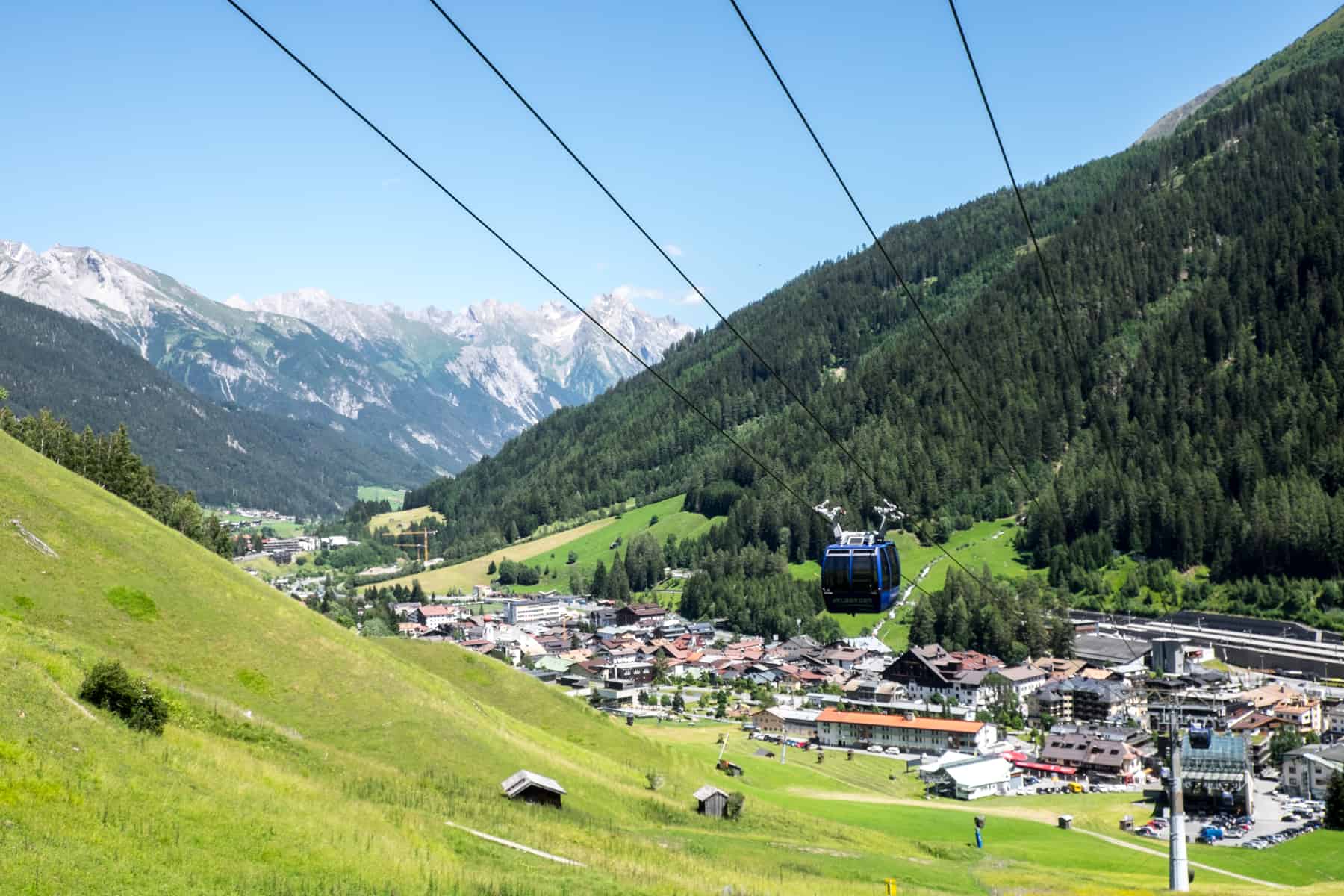
Arriving at an altitude of 2,000m, it was from the top of the cable car station that we started the hike on the Mutspuren Circular Trail. It’s a family-friendly, leisurely-paced 2.5 hours-long hike that takes you in a lightly winding loop around the Galzig Mountain with endless panoramic mountain peak views. On a clear day, you have a view further west into the neighbouring state of Vorarlberg and the woodland walls of the Verwall Alps straight ahead.
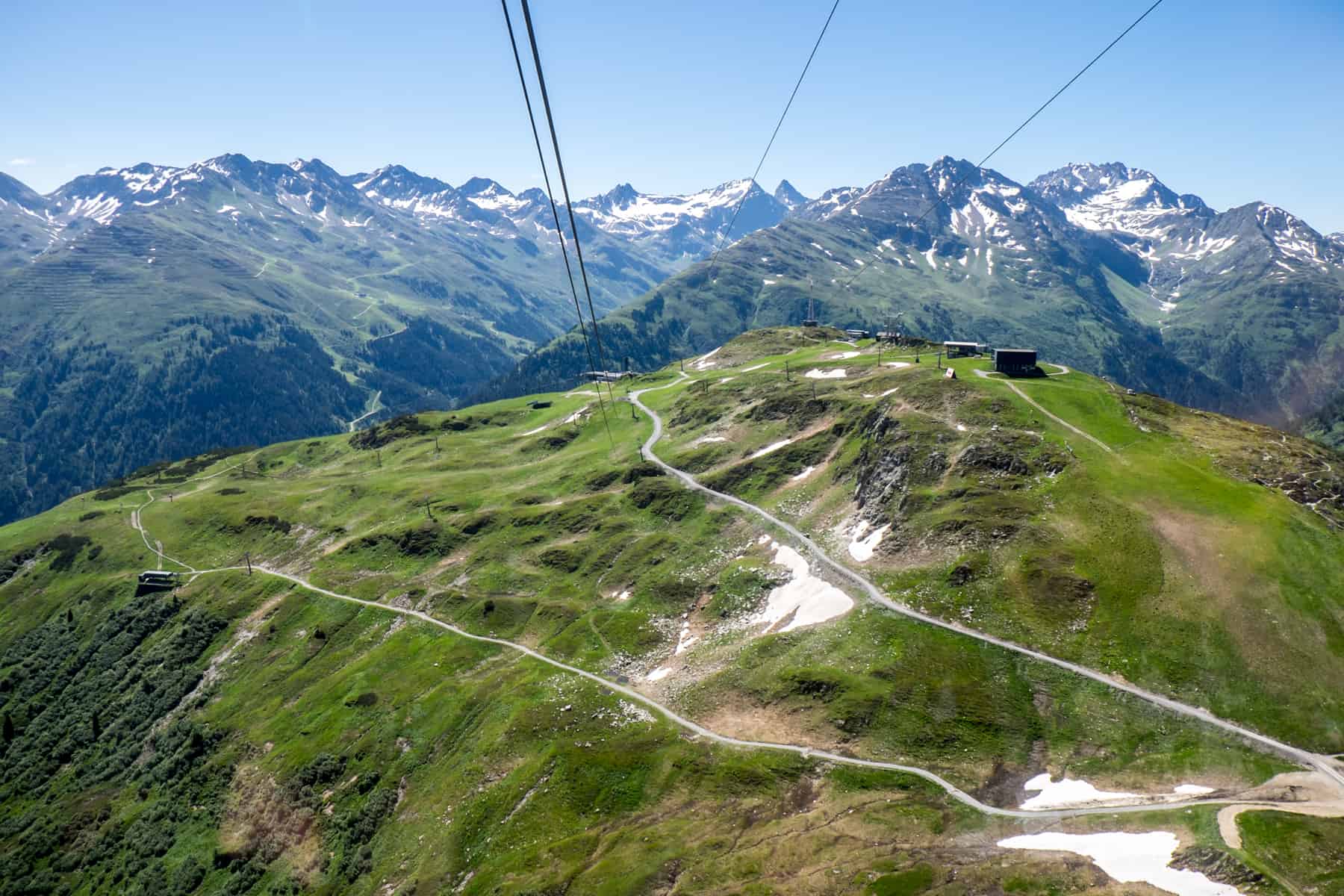
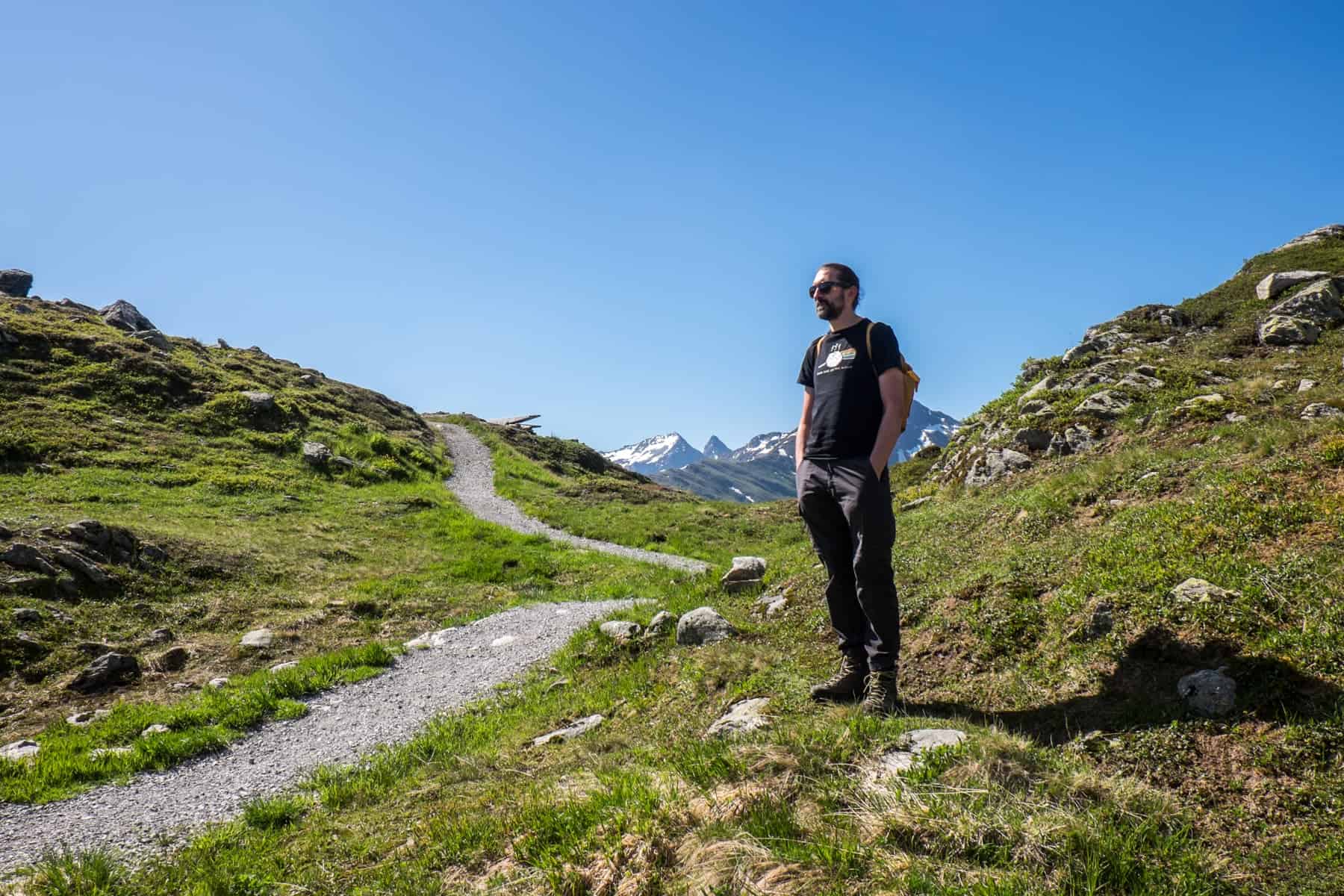
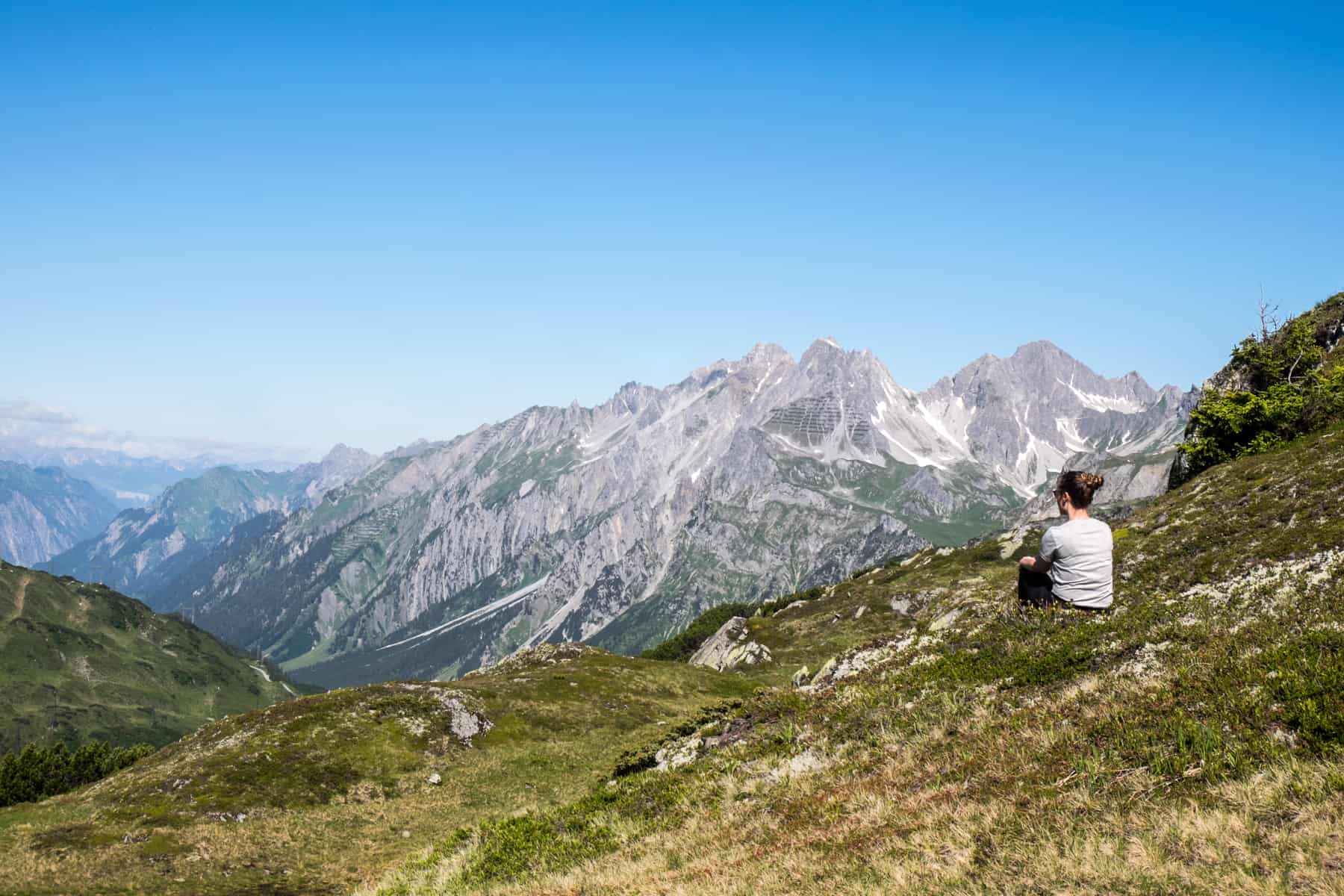
Passing lakes, blooms and shrubbery of alpine flora, as well as artwork resting places carved from natural materials to blend harmoniously with the environment, the Mutspuren Circular Trail on the Galzig a scenic pathway to get started on understanding the striking scenery that St. Anton nestles within.
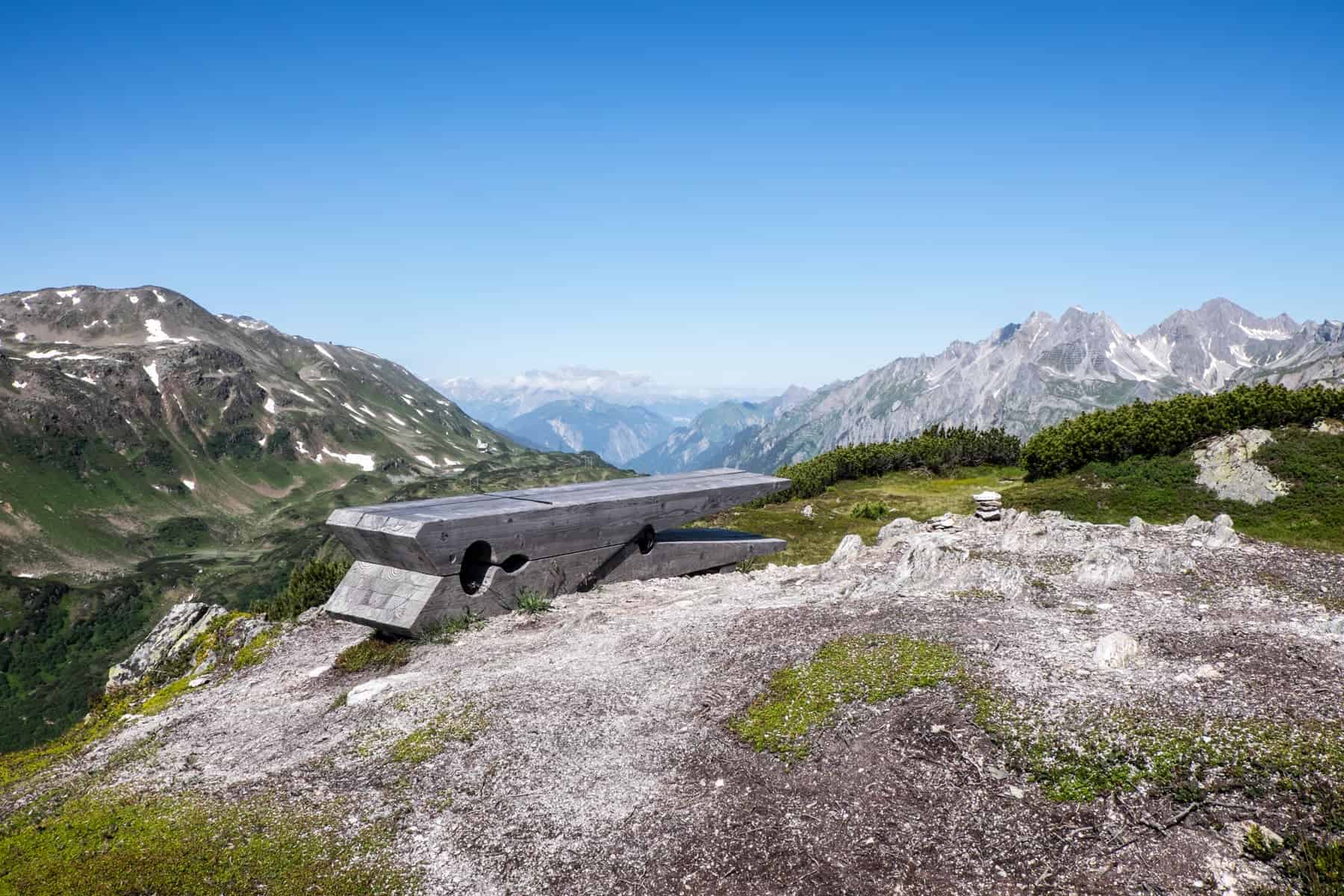
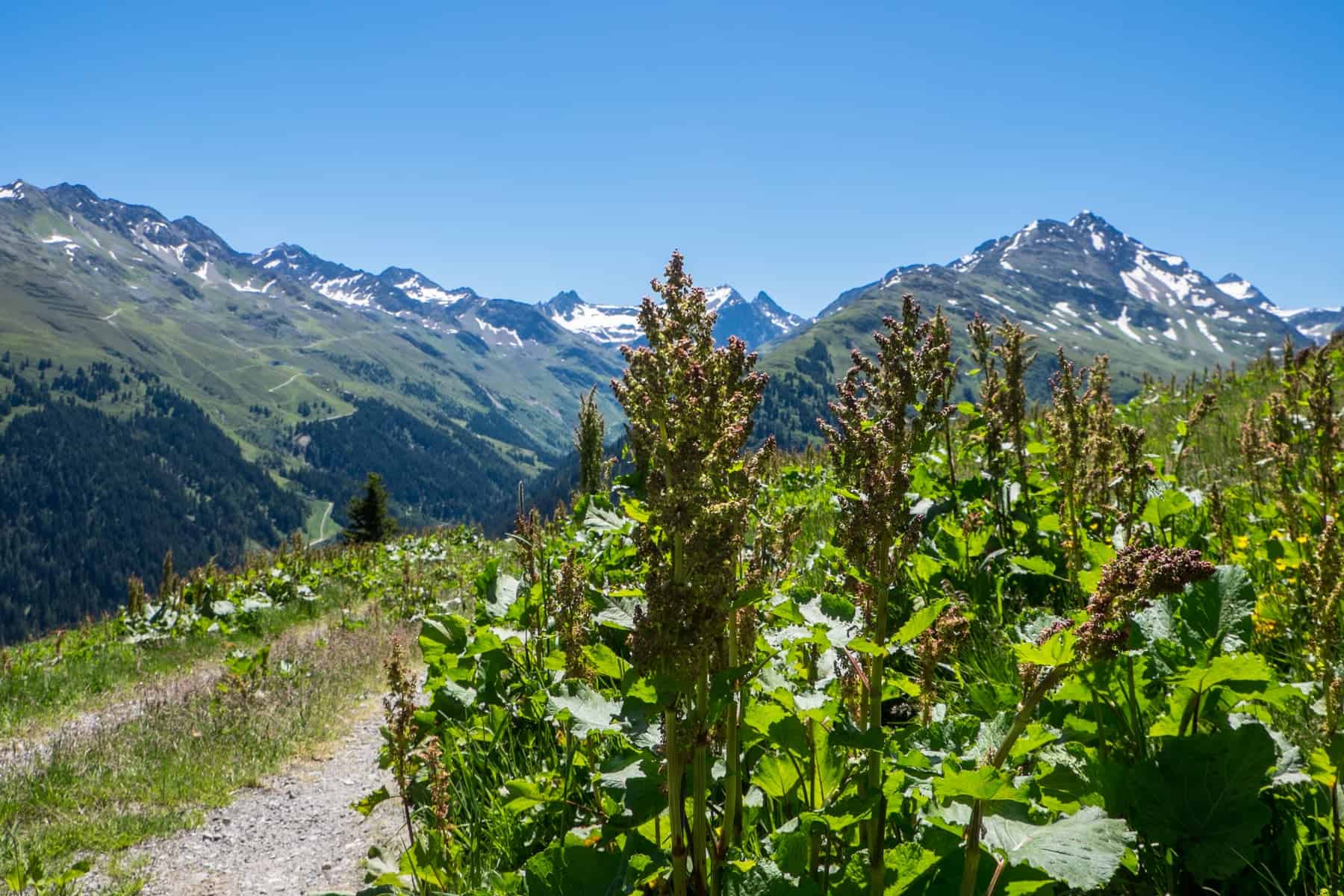
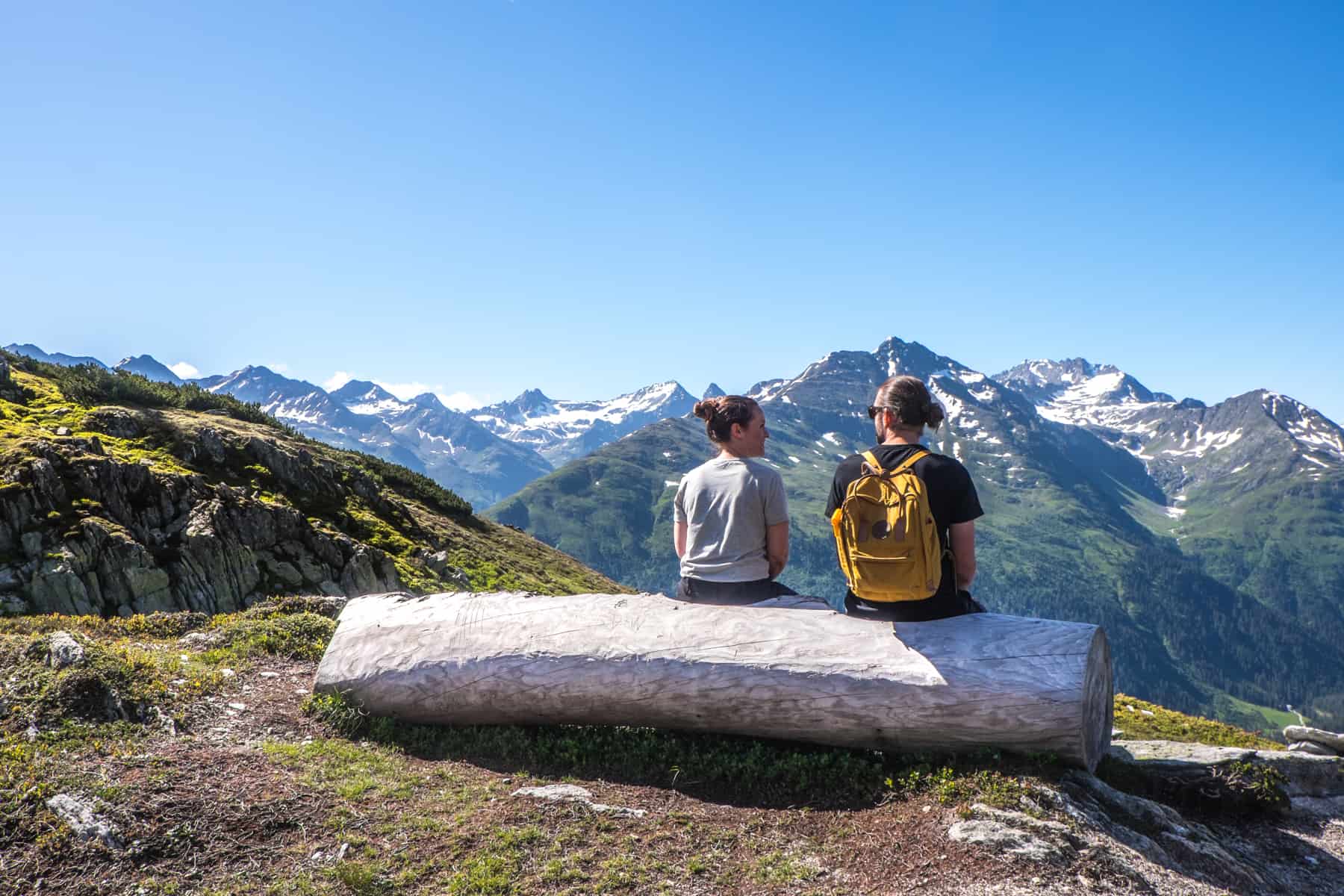
Valluga Mountain Viewpoint
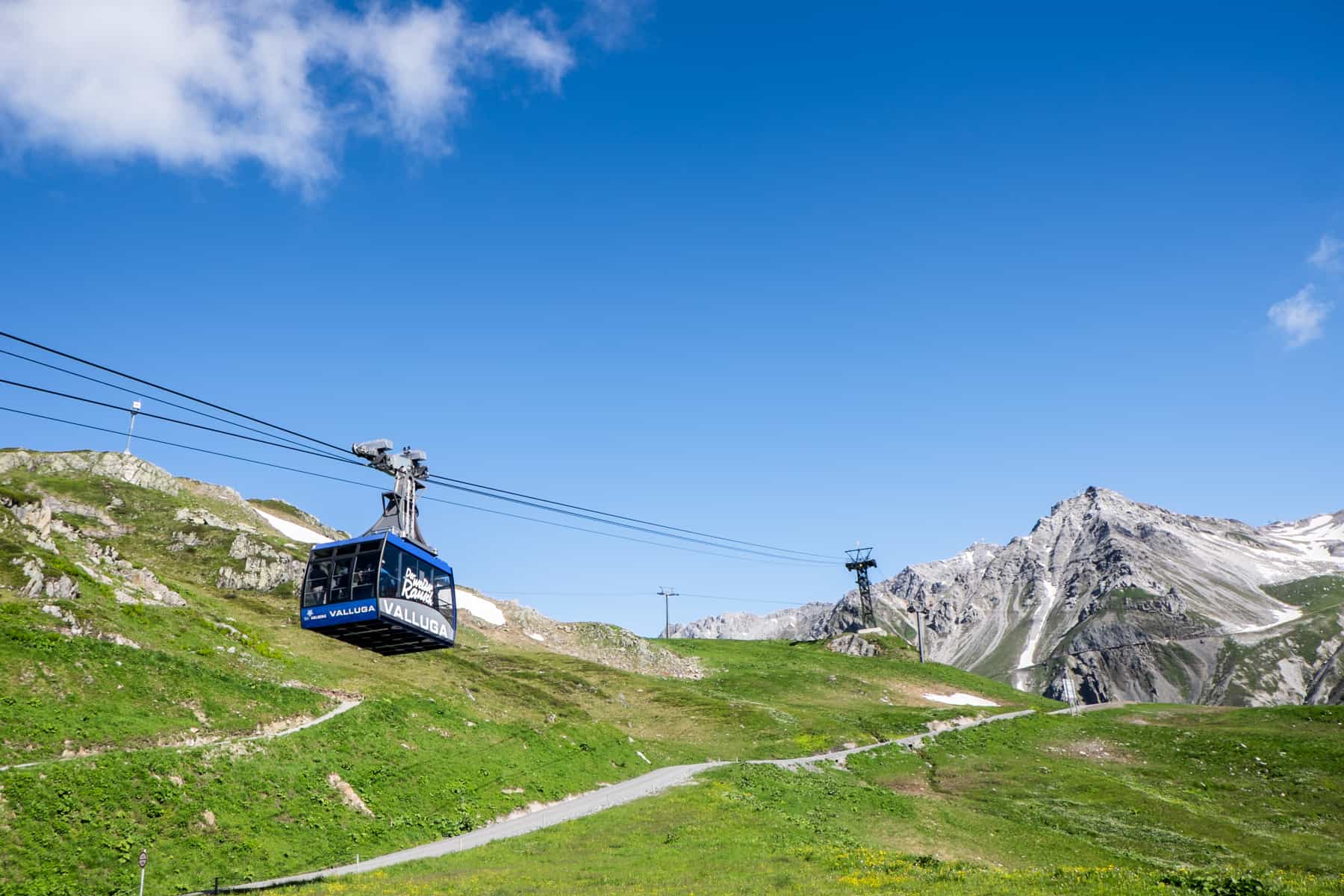
A smaller, second cable car slowly inches you up to the very top of the Valluga Mountain, which at 2,809 metres above sea level is St. Anton am Arlberg’s highest peak. A trip up here, with its windy viewing deck across the impressive mountain ranges in Germany, Switzerland and Italy, is a must.
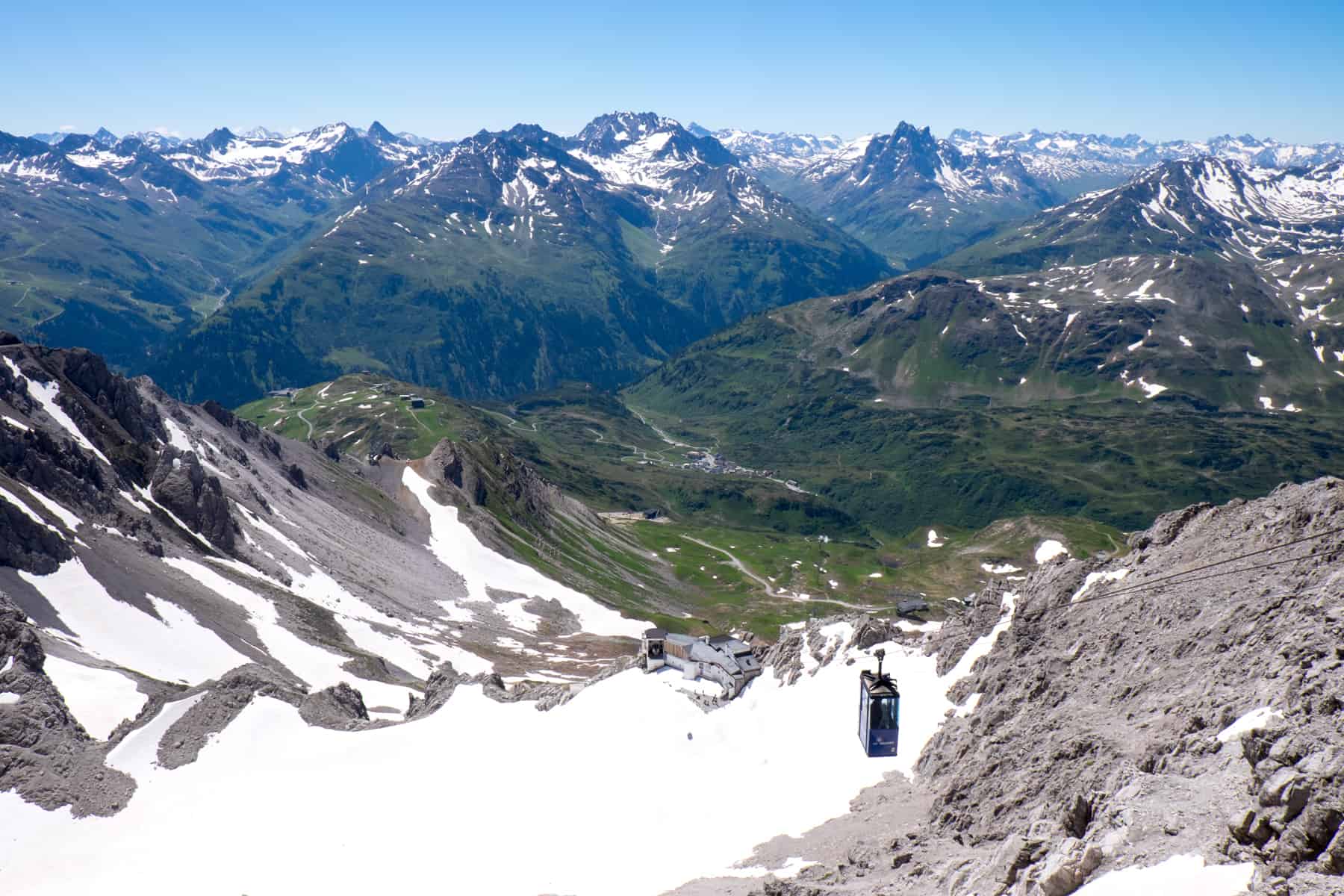
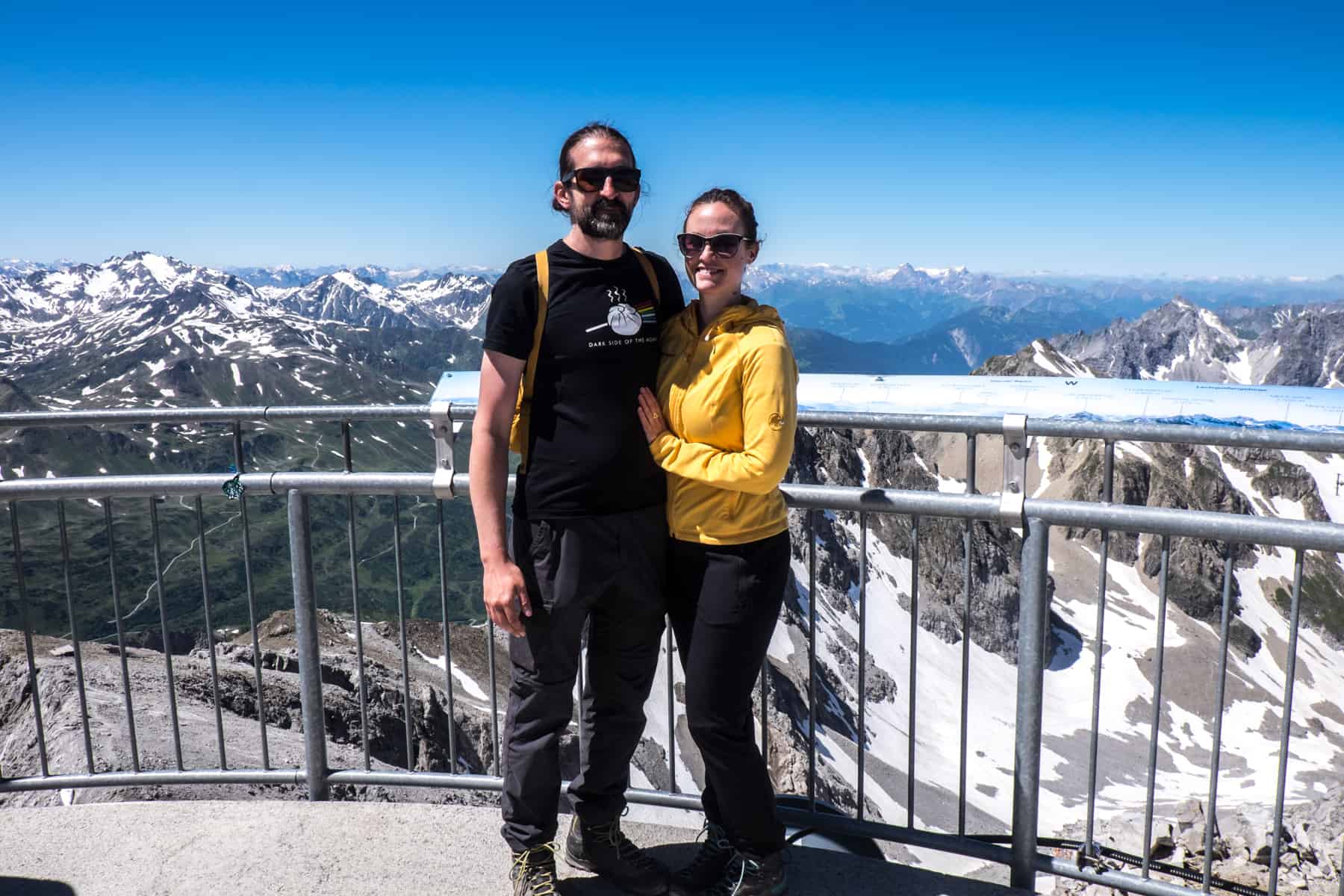

A layer cake of peaks surrounds you, in a mix of close jagged rock formations and distant snow-capped peaks. Information boards provide directions and the names of all the mountains in the varying Alps ranges that stand before you. I could even see as far as the Zugspitze – the highest mountain in Germany, accessible from Austria.
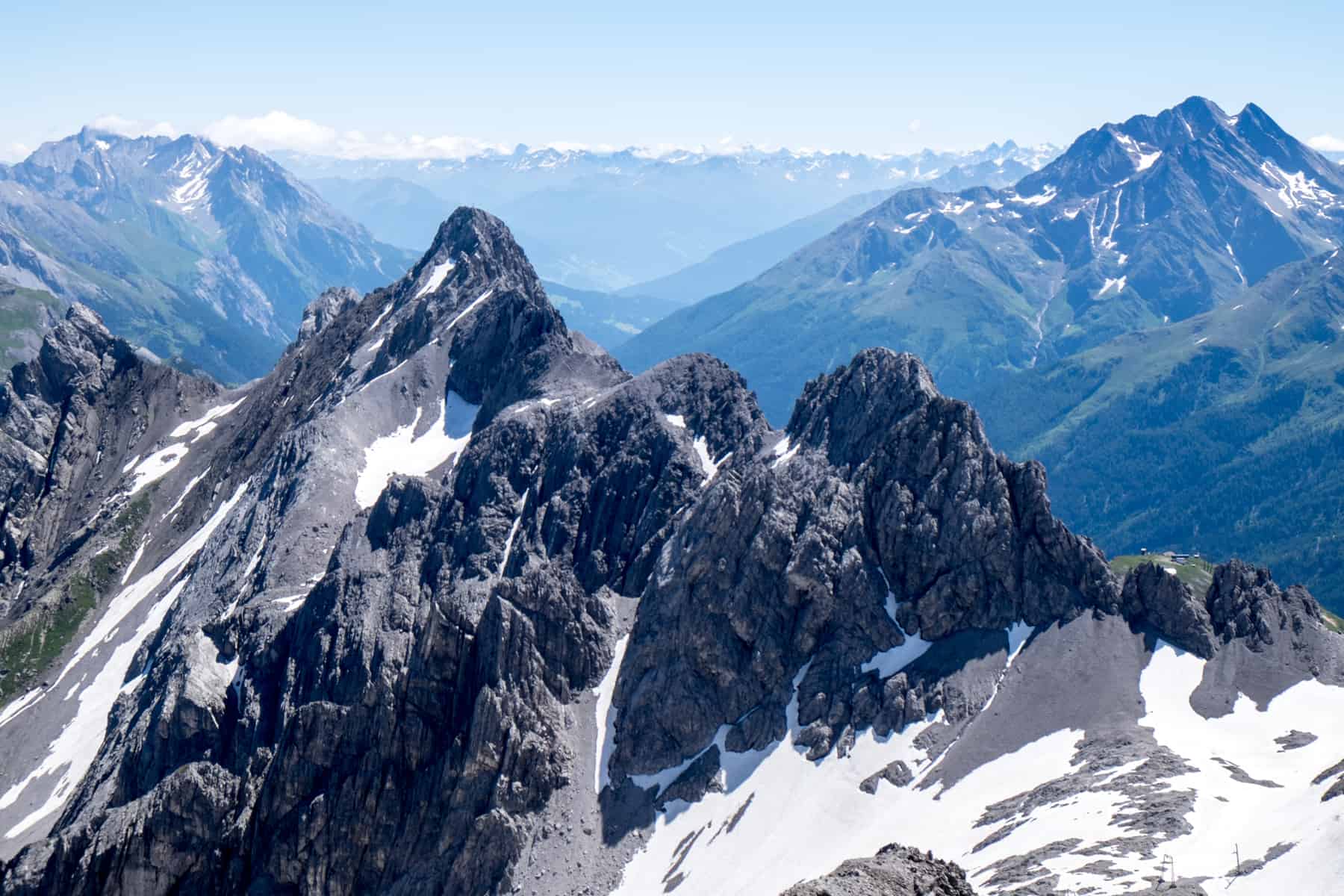
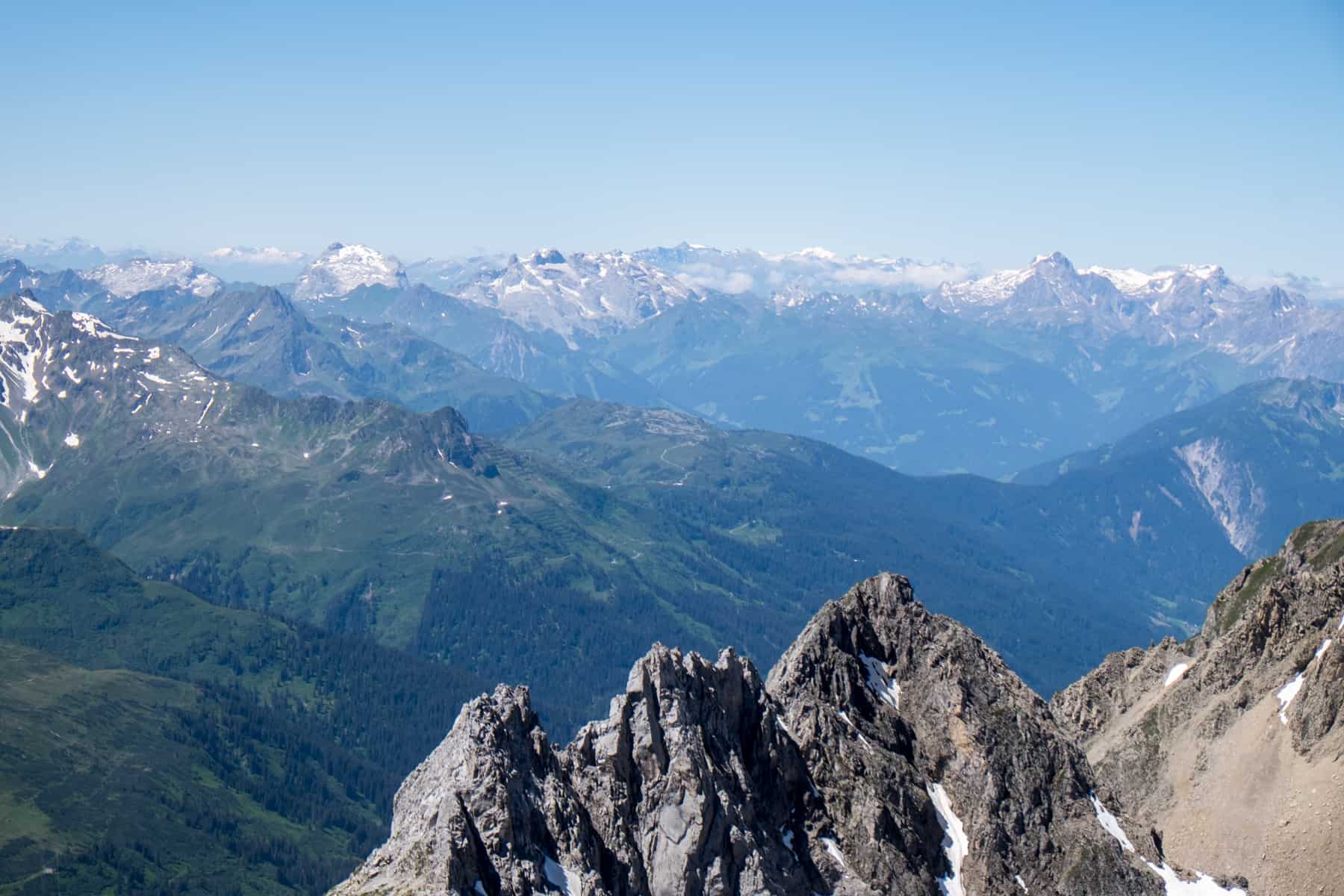
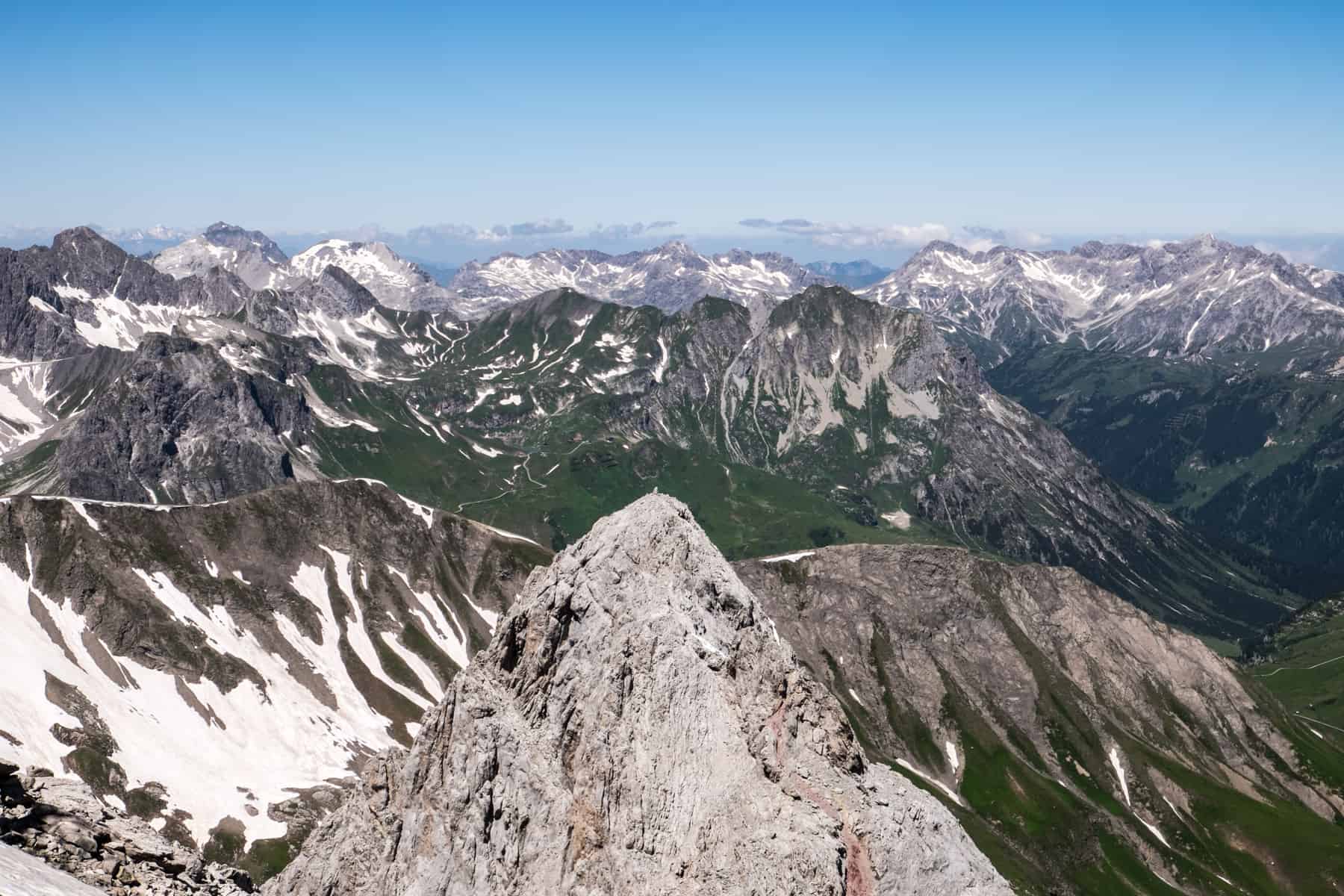
Mount Galzig to St. Anton and Visiting Senn Hütte
Back at the Galzigbahn, you can choose to take the cable car back down to St. Anton or hike down on a single trail with views of the adjacent Gampen mountain that forms part of the cluster of peaks on this side of the valley.
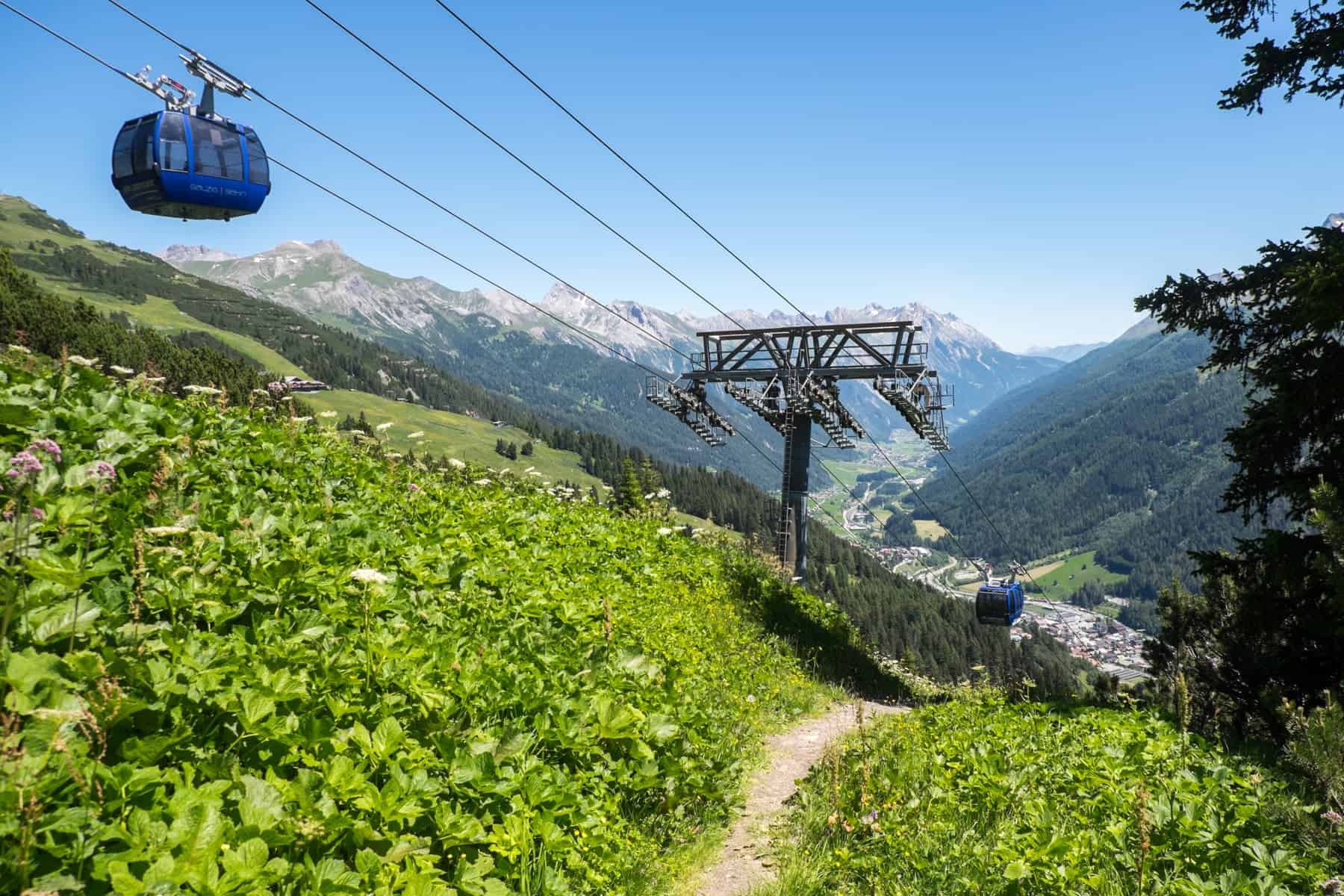
We chose to hike, taking a moderately steep two-hour wind through a landscape that is more than just worn walking trails, but which becomes a blossoming garden. Splashes of colour illuminate next to the pockets of small forests of evergreen pine trees.
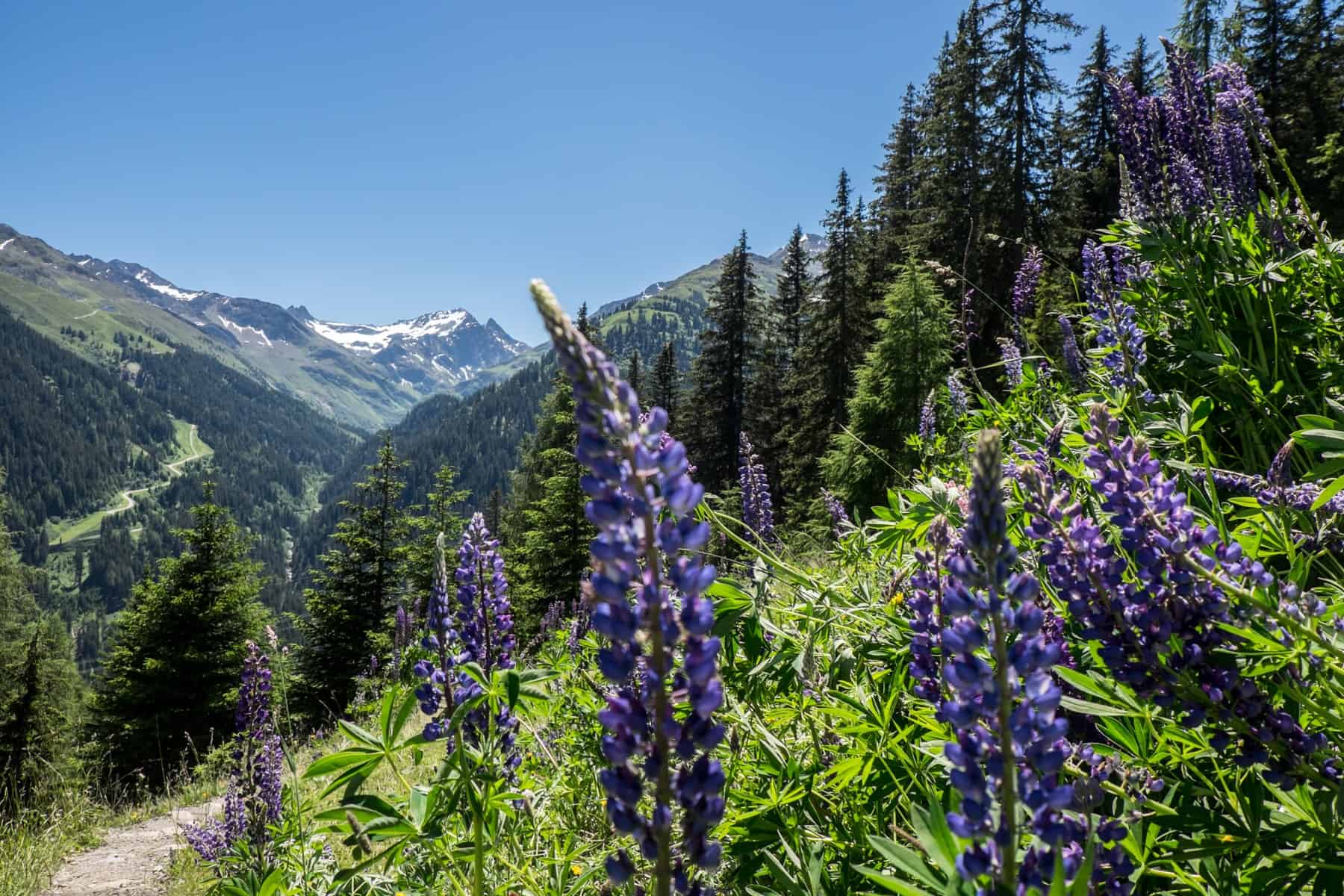
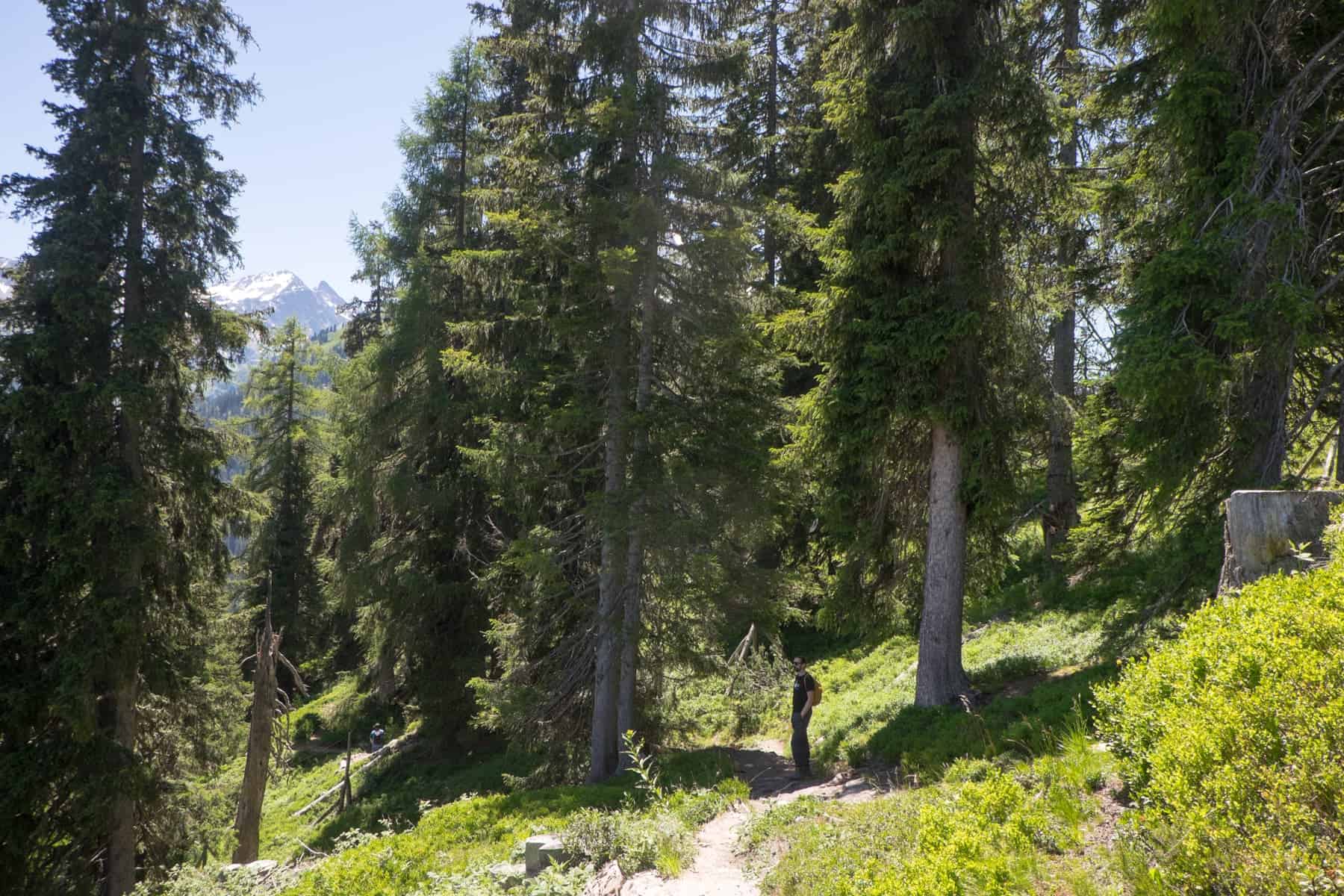
St. Anton in summer sees a bloom with over 250 species of plants and mountain herbs. We spotted flowers, including fuchsia pink meadow clovers, long purple-blue crowfoot, and yellow Arnica. If you want a more in-depth insight into the medicinal herbal culture here, the local hiking guides are the perfect source of knowledge.
Sampling locally grown produce and herbs is also not just in gourmet restaurants in the village, but upon the mountain as well. On the hike down you will pass the Senn Hütte – a second-generation family-run establishment that overturns the perception of traditional mountain hut grub.

With an extensive herb garden and owner, Tanja Senn being a trained herbalist, the culinary specialities served here keep to the Austrian tradition, but in using the garden herbs, elevates the dishes (such as the dumplings we devoured) to a higher gastronomy standard. Everything from sauces to homemade gin is available for purchase on-site.
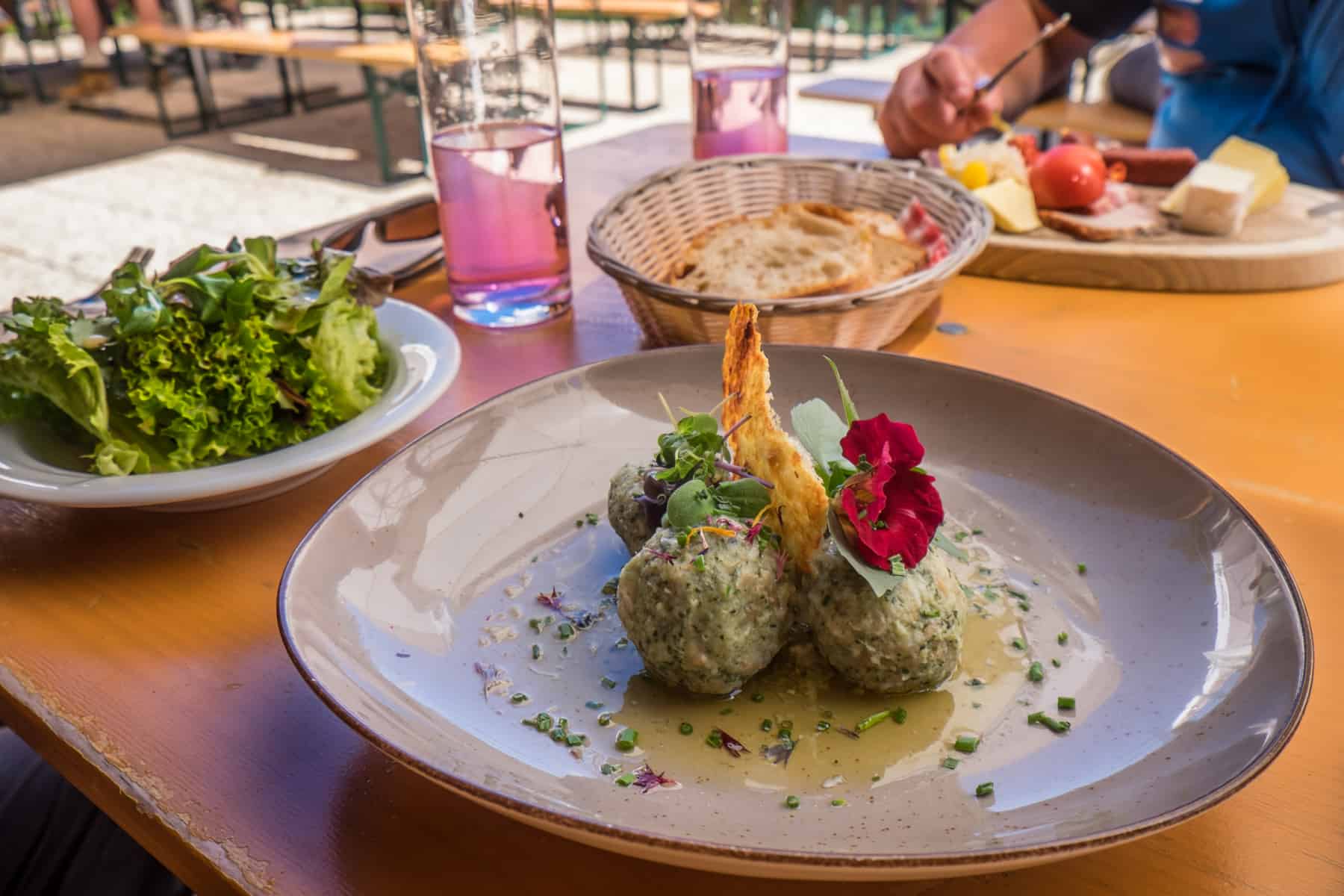
You pass the Senn Hütte’ Alpine Flowers and Herbs Way’ when continuing on the way back to St. Anton, which forms part of the WunderWanderWeg (WonderHikingTrail). It’s a chance to admire the spectrum of herbs being grown here with all senses and drink fresh, Tyrolean mountain water straight from the fountain. Flower enthusiasts will also note the giant flower arrangement – the 100,000 symbolically alpine edelweiss plants that made the 2017 Guinness World Record.
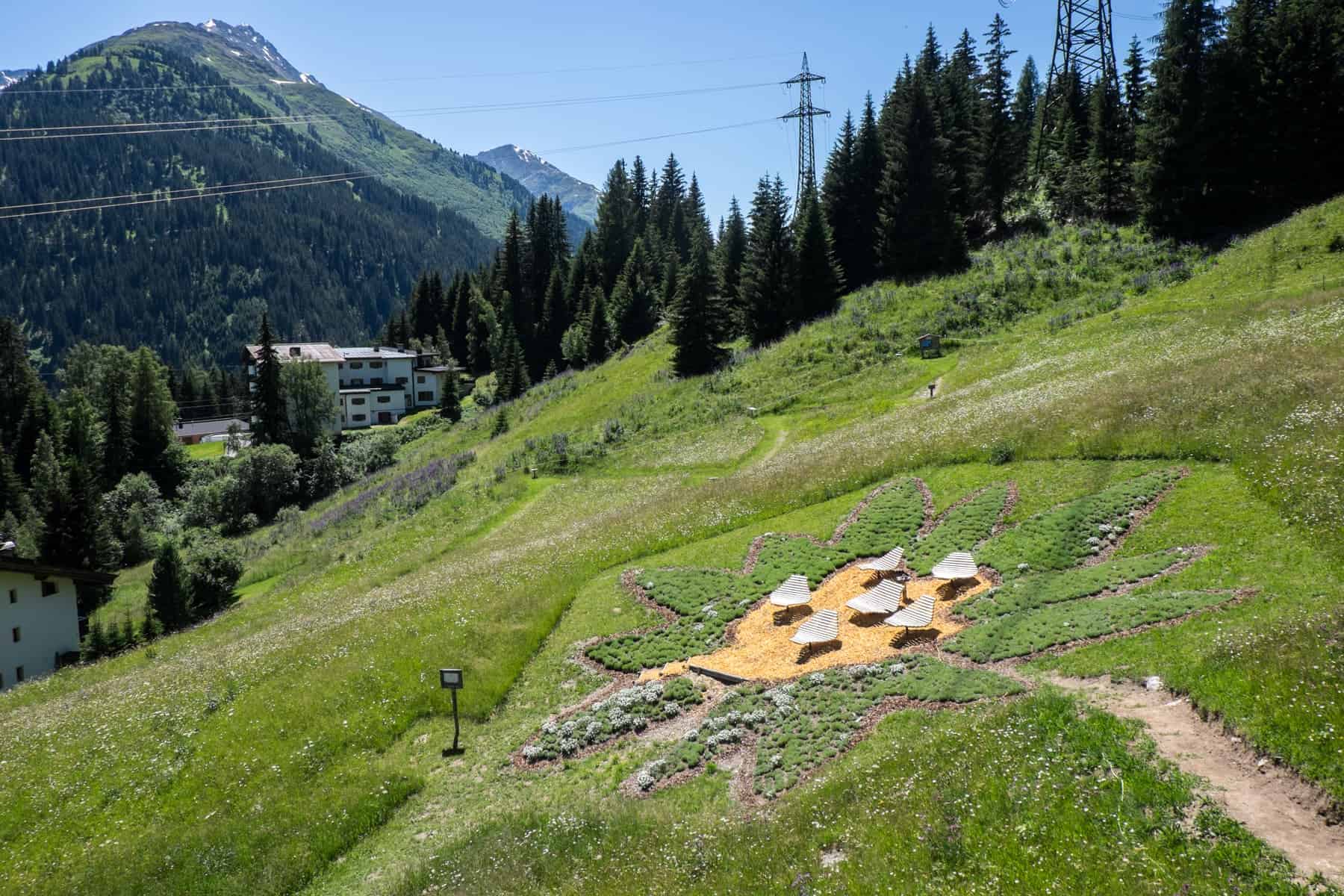
Mount Gampen and Mount Kapall Views
With a few hours left on this first day to use the cable cars, and after looking out across this mountain range from a distance, we decided to take the Gampenbahn and head up the mountain for more views. Like on the Galzig, viewpoints are marked with relaxing wooden seats designed to complement the landscape.
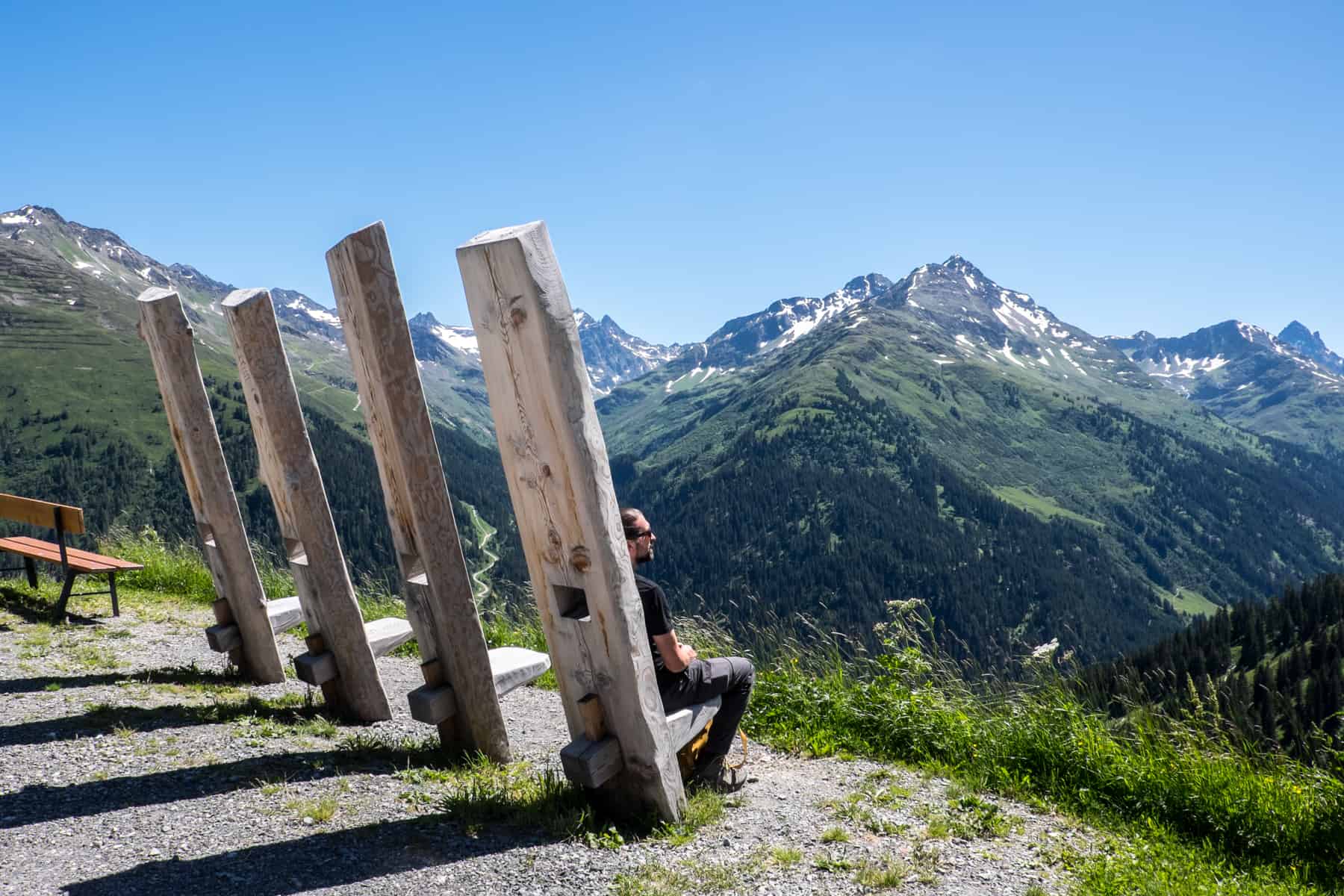
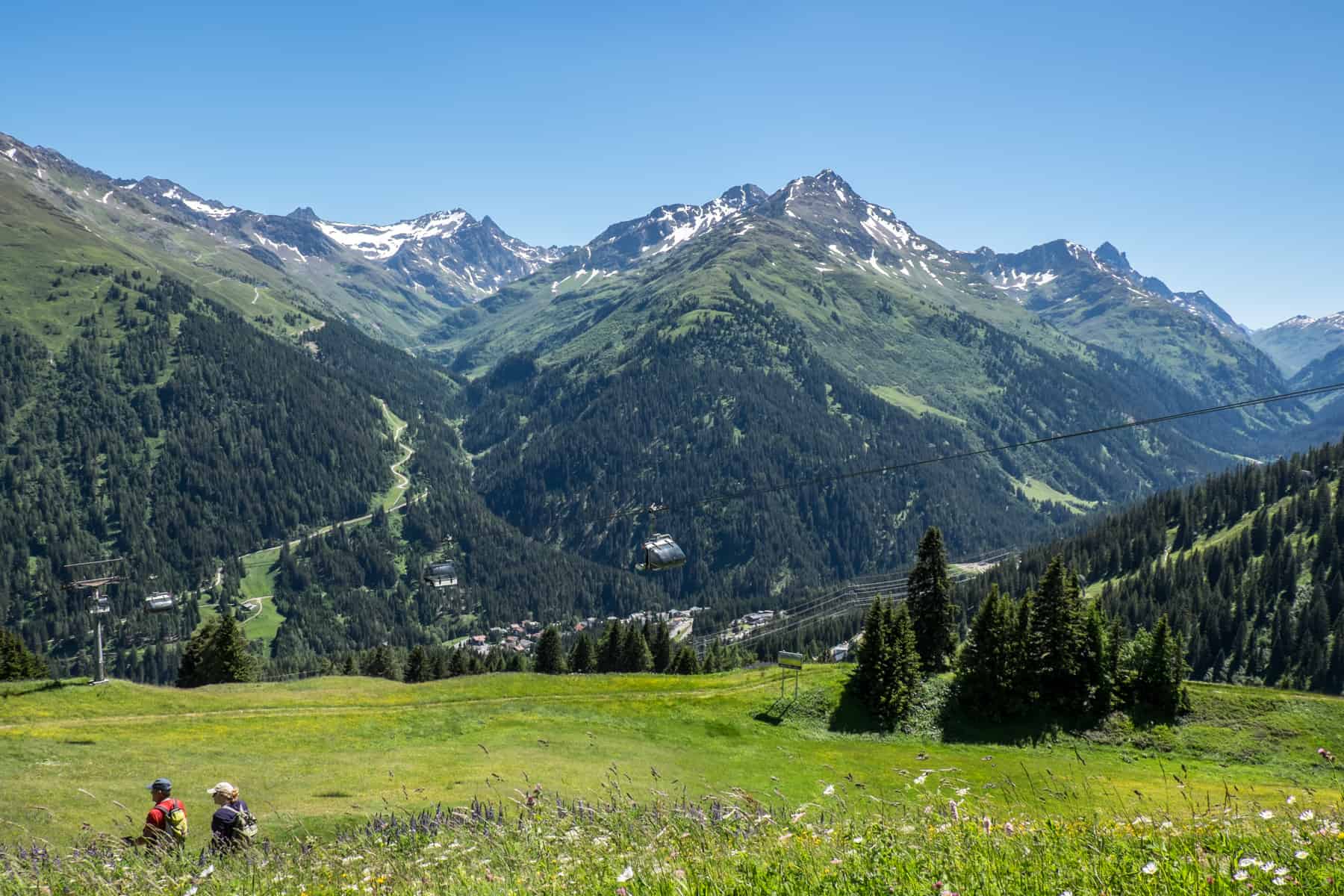
From the Gampenbahn we hopped on the Kapallbahn to ascend higher, enjoying a coffee with a view at the Kapall-Hut at 2,330 metres. Not only is the Kapall-Hut the highest mountain hut in St. Anton, but also it overlooks the Kandahar Run – one of the circuits for the Alpine Ski World Cup. Ski, even when not in season, is always a proudly worn fixture wherever you roam.
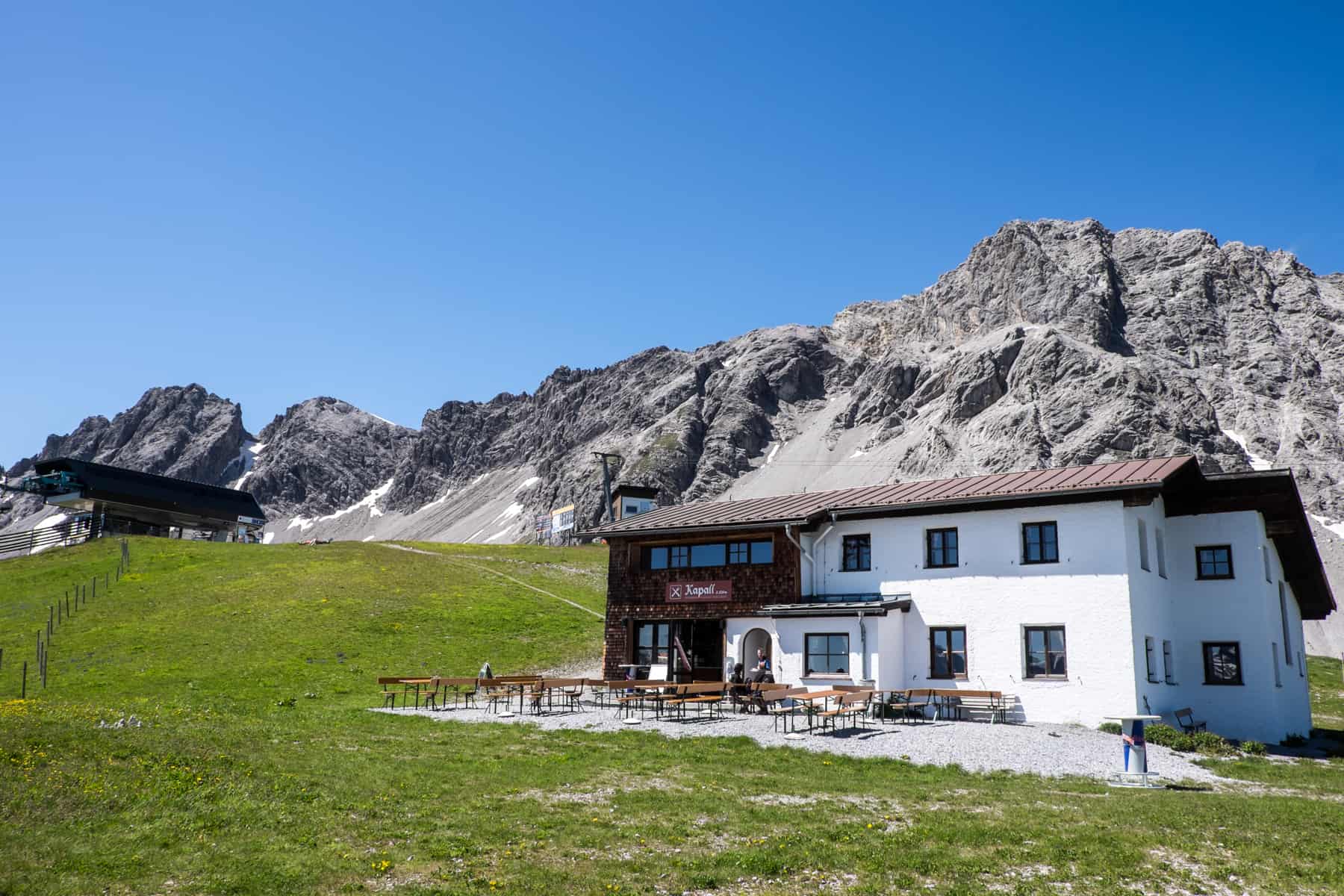
E-biking to the Konstanzer Hütte
Keen bikers, we wanted to explore more of St. Anton am Arlberg valley on the ground, which is made accessible via the circuit of over 350km of biking trails. We hired e-bikes from the village Intersport store for half a day and set out with Chris from local adventure sports company, H20.
Our biking route would take us through a belt of the Verwall Valley to the famed Konstanzer Hütte, leaving St. Anton on the Old Arlberg road that gains elevation and soon turns into a gravel path that leads you deep within the forested vale.
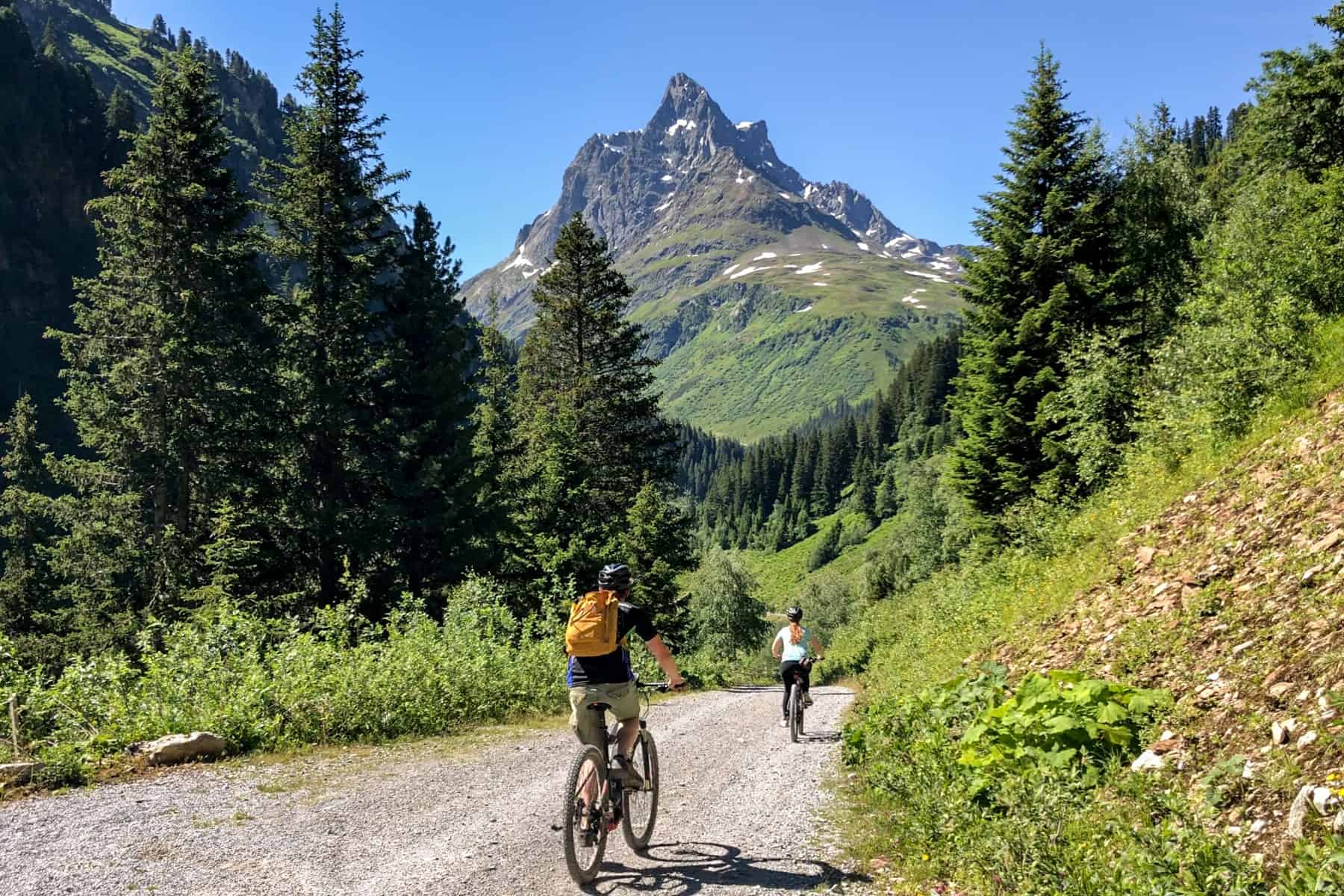
On our four-hour round-trip, we stayed tucked within tree-laden trails and crossed wooden bridges over trickling waters. We emerged onto paths running parallel to the gushing Rosanna River and past emerald green lakes, all backed by incredible mountain vistas.

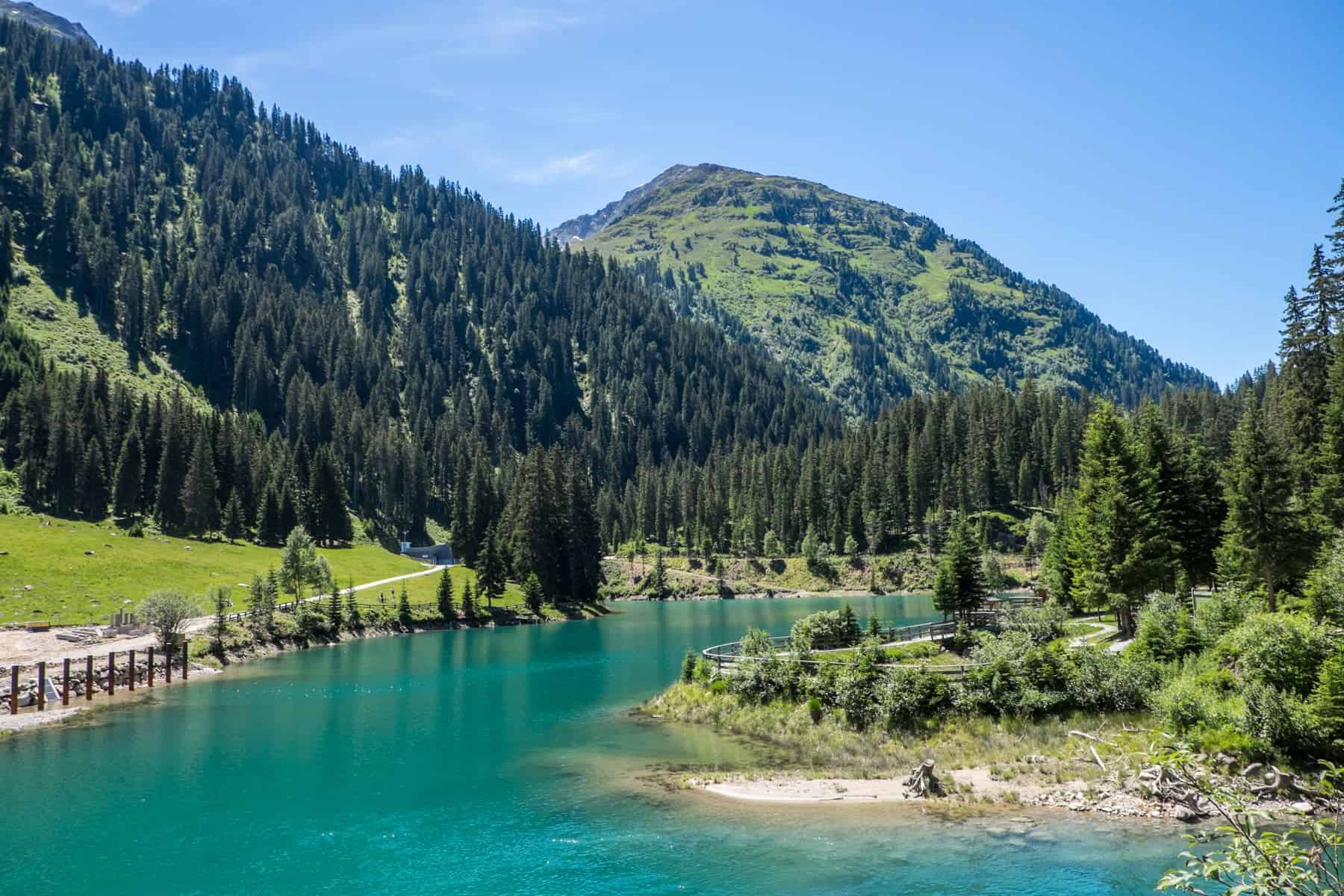
The last steep push upon the path to the Konstanzer Hütte comes with the reward of sampling the refreshments of one of eight huts on the Verwall circuit standing at 1,688 meters.


Overall, our trip was a shorter version of a more challenging two kilometres and three-hour route that continues past Konstanzer Hutte towards the Heilbronner Hut at 2,320 metres. This area also recently gained a newly built Stanzertal cycle path between St. Anton am Arlberg and Schnann that takes you on a route gaining 1,160 metres in elevation.
For those hiring e-bikes for an extended time, there are five quick-charging e-bike stations around St. Anton, including the Rendlbahn cable station, the Tourism Information Office and by the Town Hall.
Alpenrosenweg Hike on the Rendl Mountain
From the Galzig and Valluga mountains, we gazed upon the slopes above St. Anton on the opposite side of the valley and saw a straight path that cut through the forested mountain like a long shelf. This track forms part of the Alpenrosenweg hike (Alpine Rose Path), which we heard was also one of the most beautiful of the region’s 300km of hiking trails, living up to its namesake.
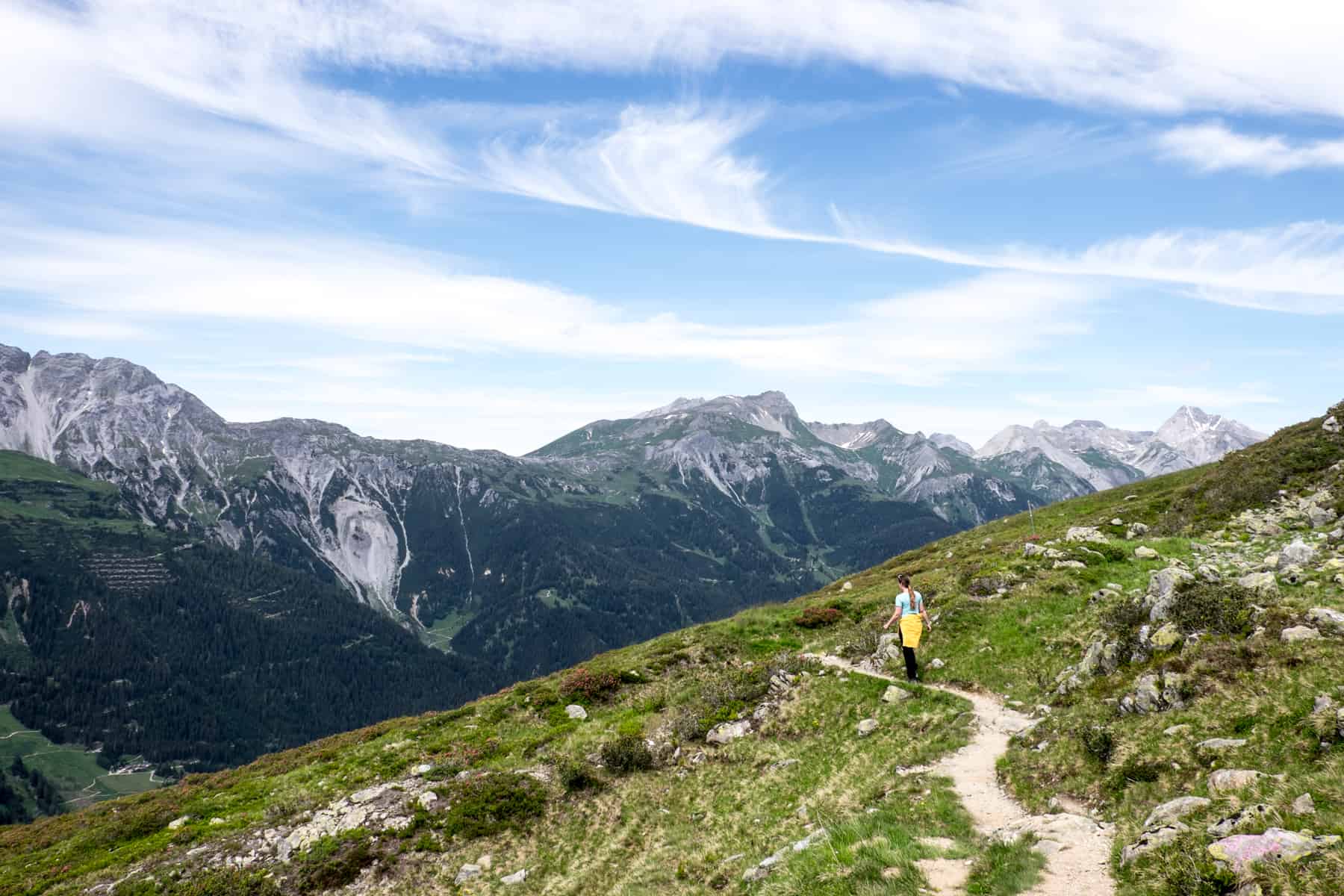
While you can start a more extended version of the hike from St. Anton, we chose to do the version that begins at the top of the Rendlbahn cable car at 2,030 metres, hike lower to the Rendlalm at 1,791 metres and then descend back to St. Anton from there.
The hike starts with a short uphill segment after the cable car stop, before continuing on a long, stunning stretch of a rocky pathway lined either side in a wavering wall of pinkish-red roses. The string of alpine flowers gives this peak the locally dubbed ‘burning mountain’ name because of its immense colour splash. We were lucky to have visited in July since June and July are when the alpine roses are in full bloom in St. Anton am Arlberg.
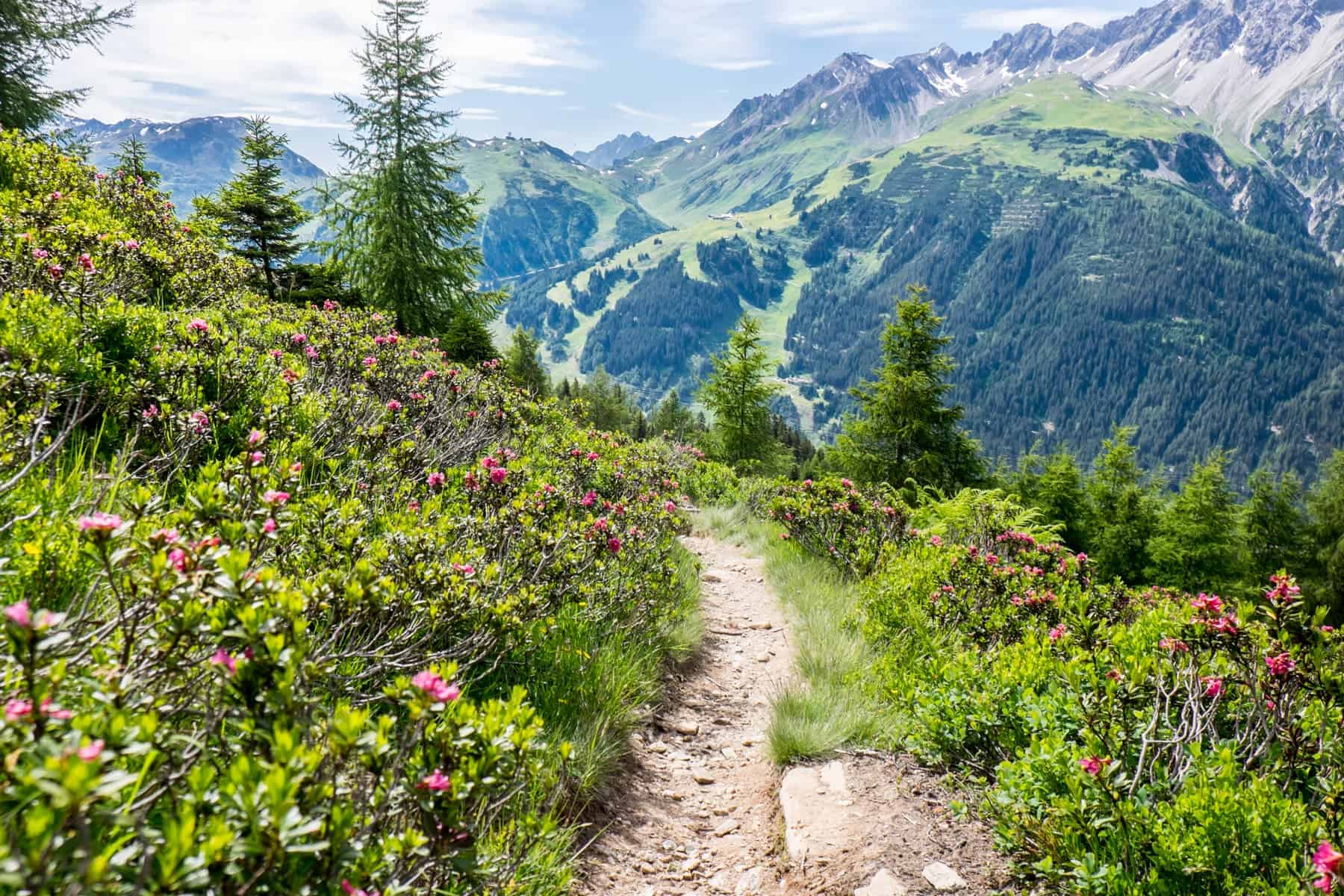
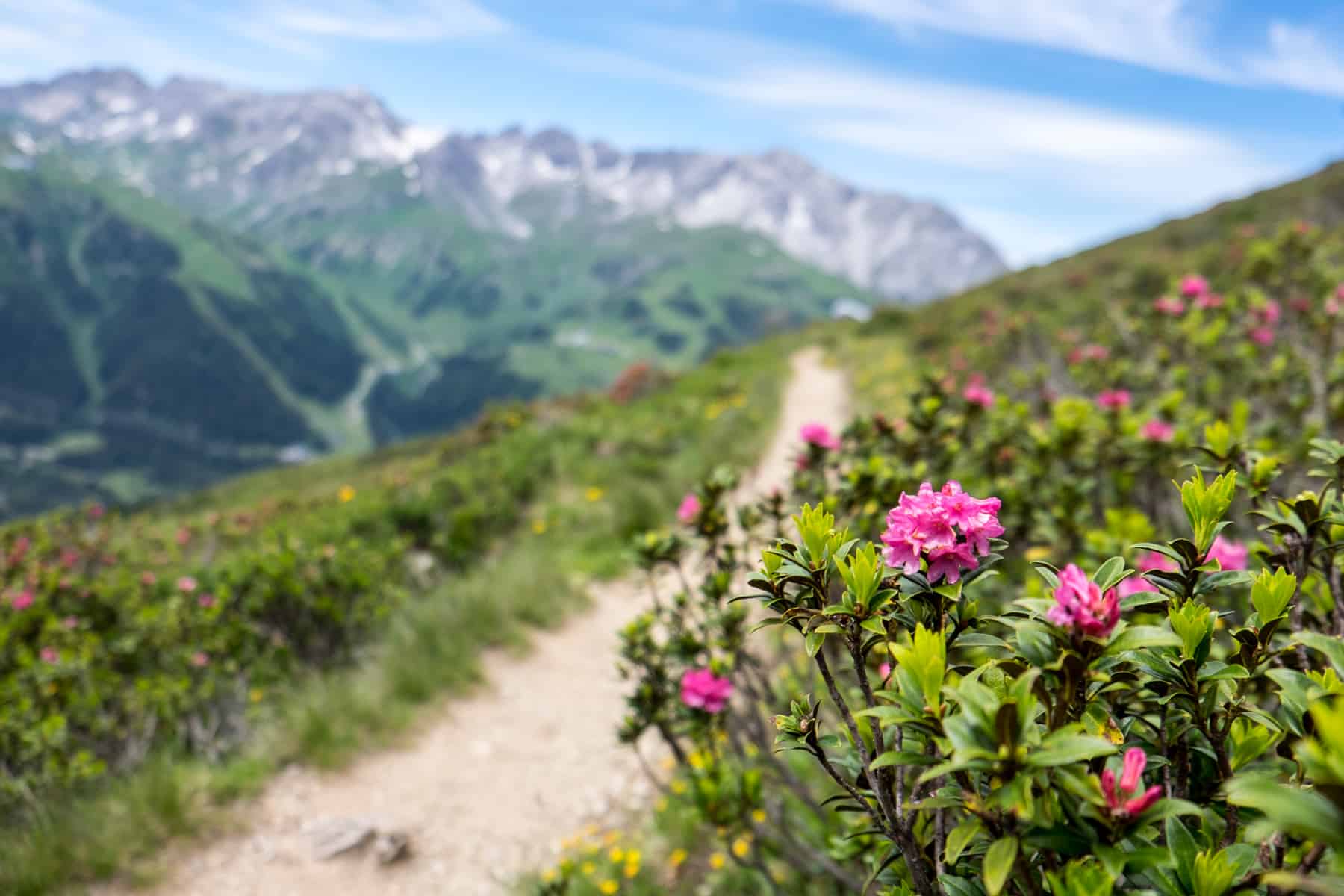
Resting lounge chairs sit within the natural overgrowth of the mound and mark the picture-perfect spot to clear views down to the villages below, and the mountains traversed the day before.
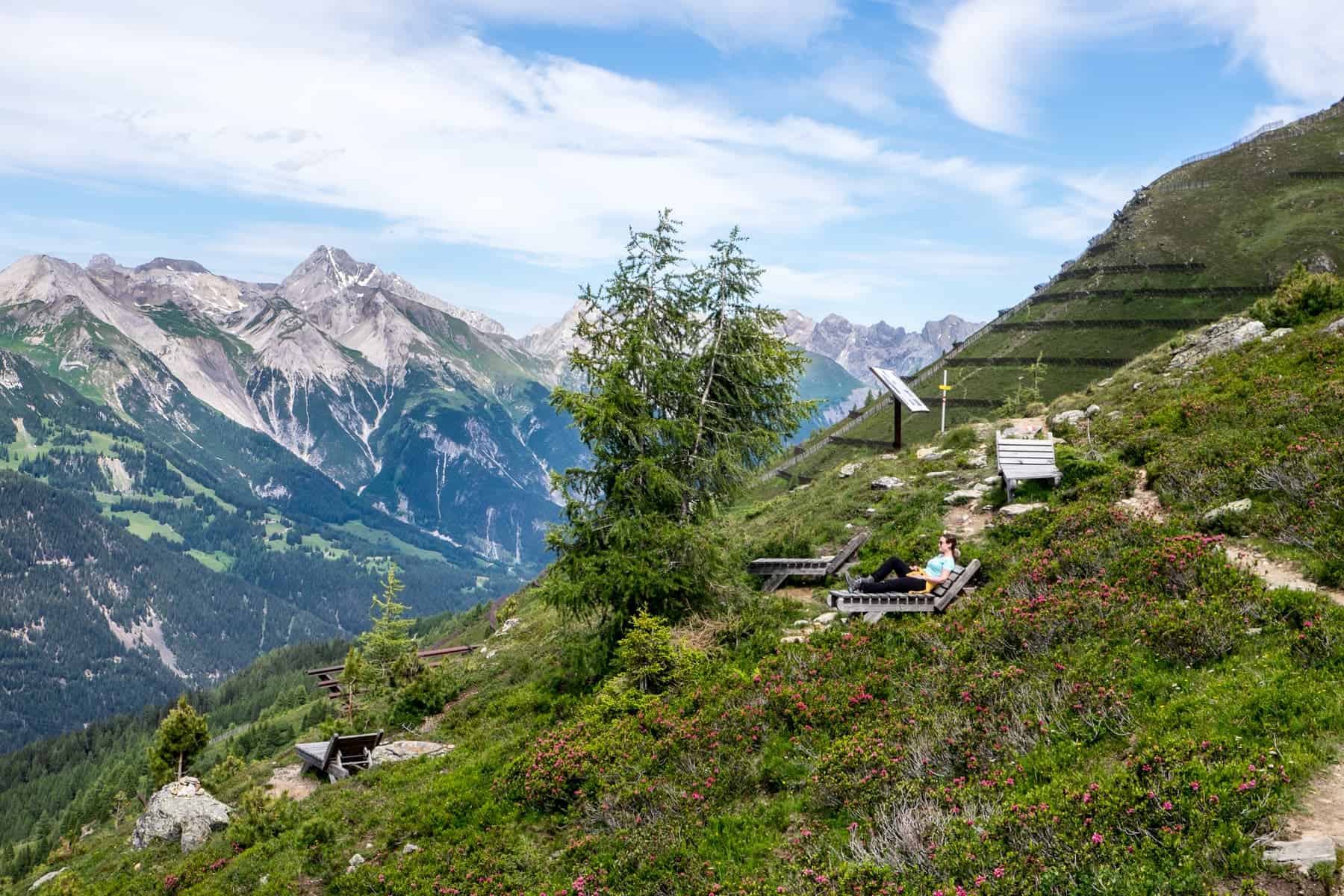
After the rose-lined walkway, you’ll soon be following signs to the Rendlalm, once the path begins to incline. After crossing the small river, another ledge-like pathway descends to the mountain hut. Stop here for scenic refreshment and views over St. Jacob (a sub-district of St. Anton).
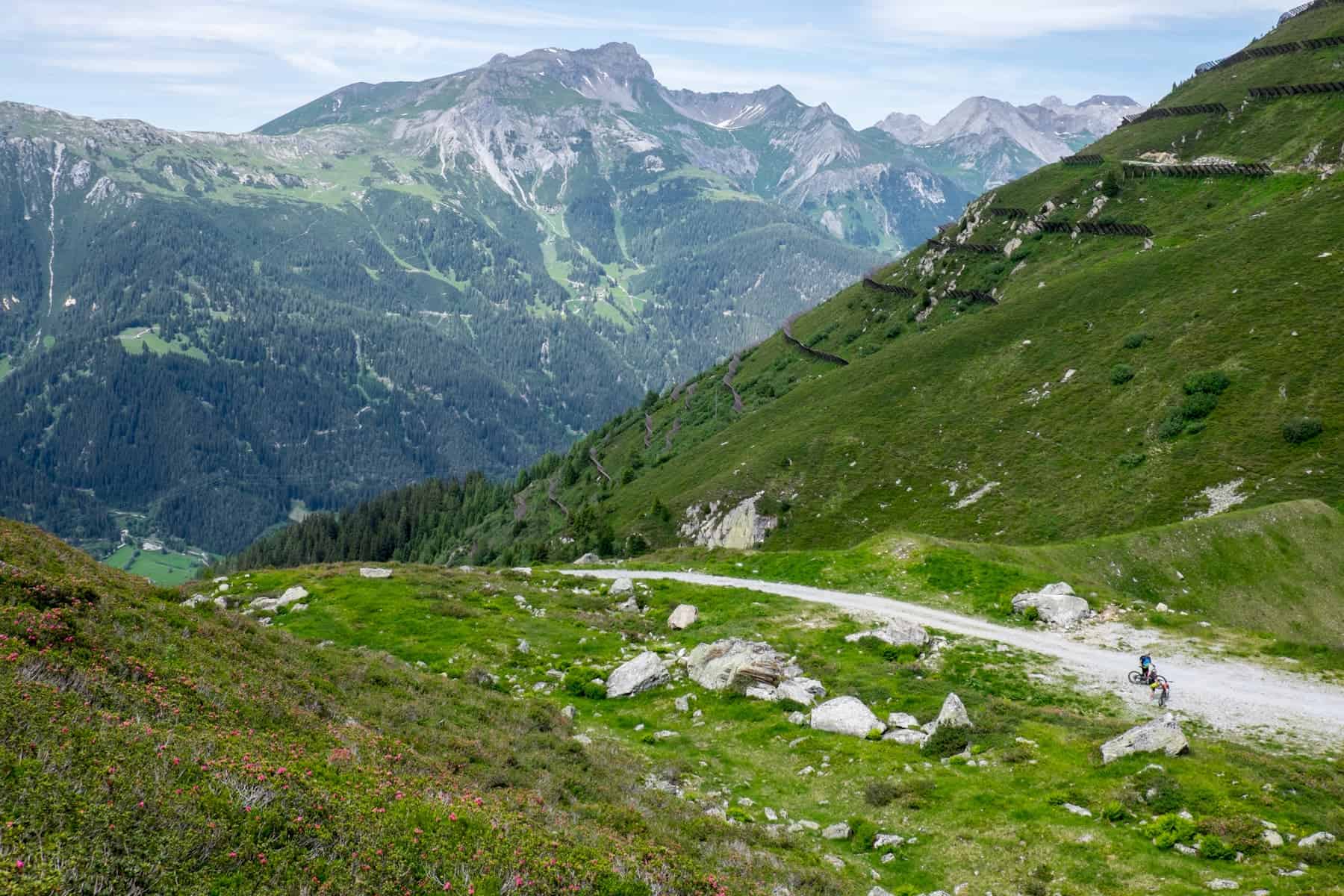
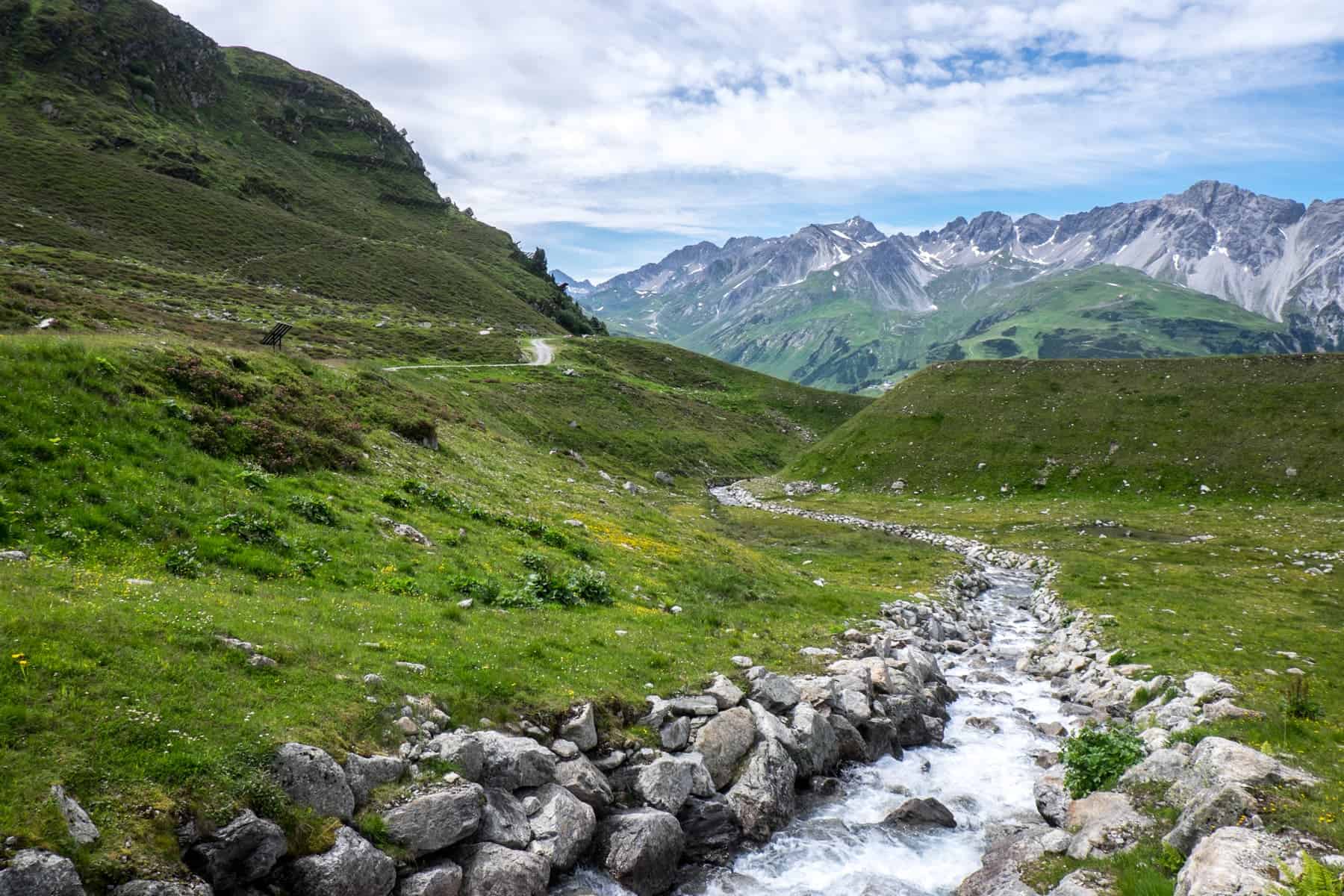
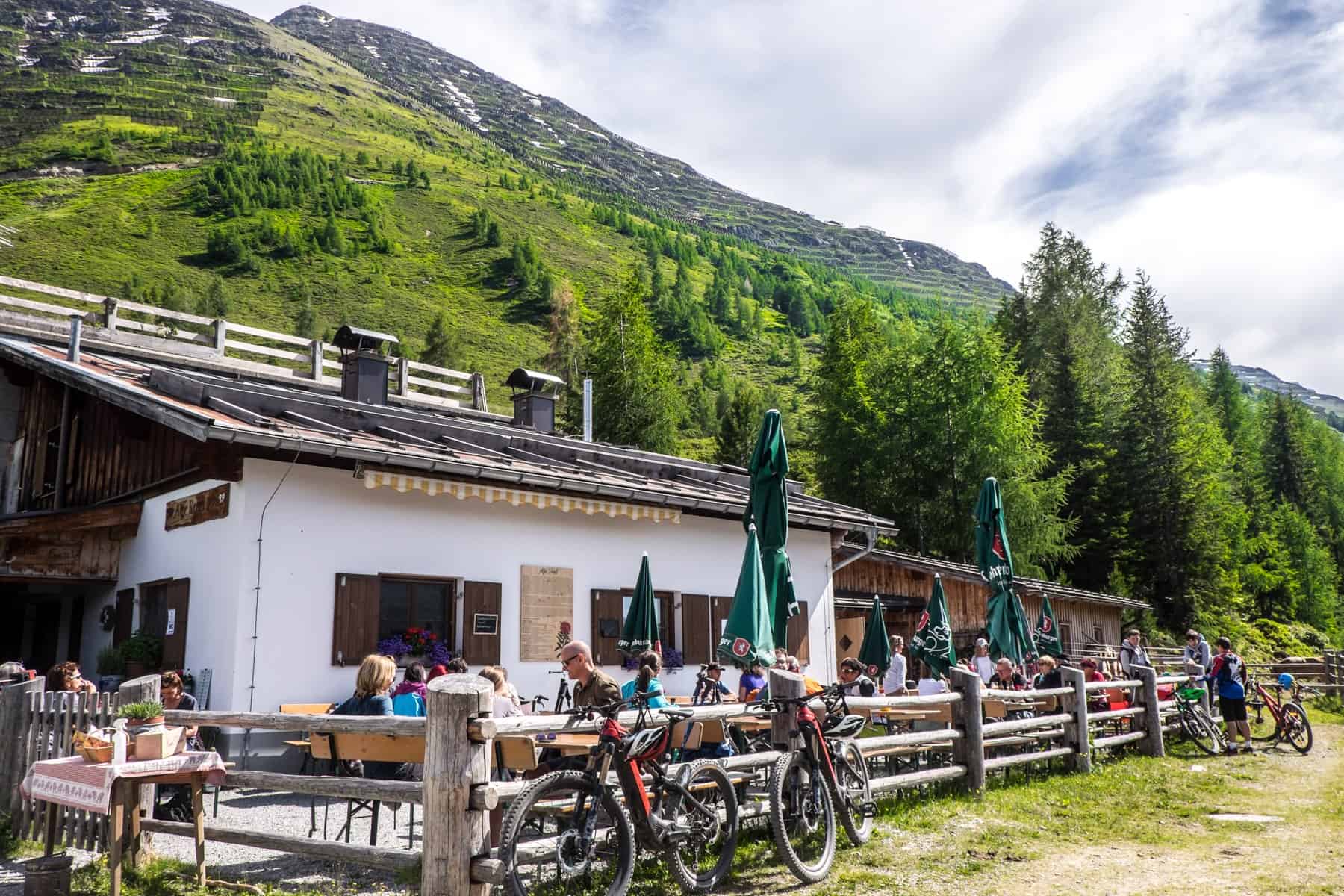
Hike from the Rendlalm back down to St. Anton following signs for the Jakobsweg and St. Anton. For a more straightforward descent, you can follow signs to St. Anton until you reach the wide, paved road, which you can follow down directly to the village and bypass more forest trails.
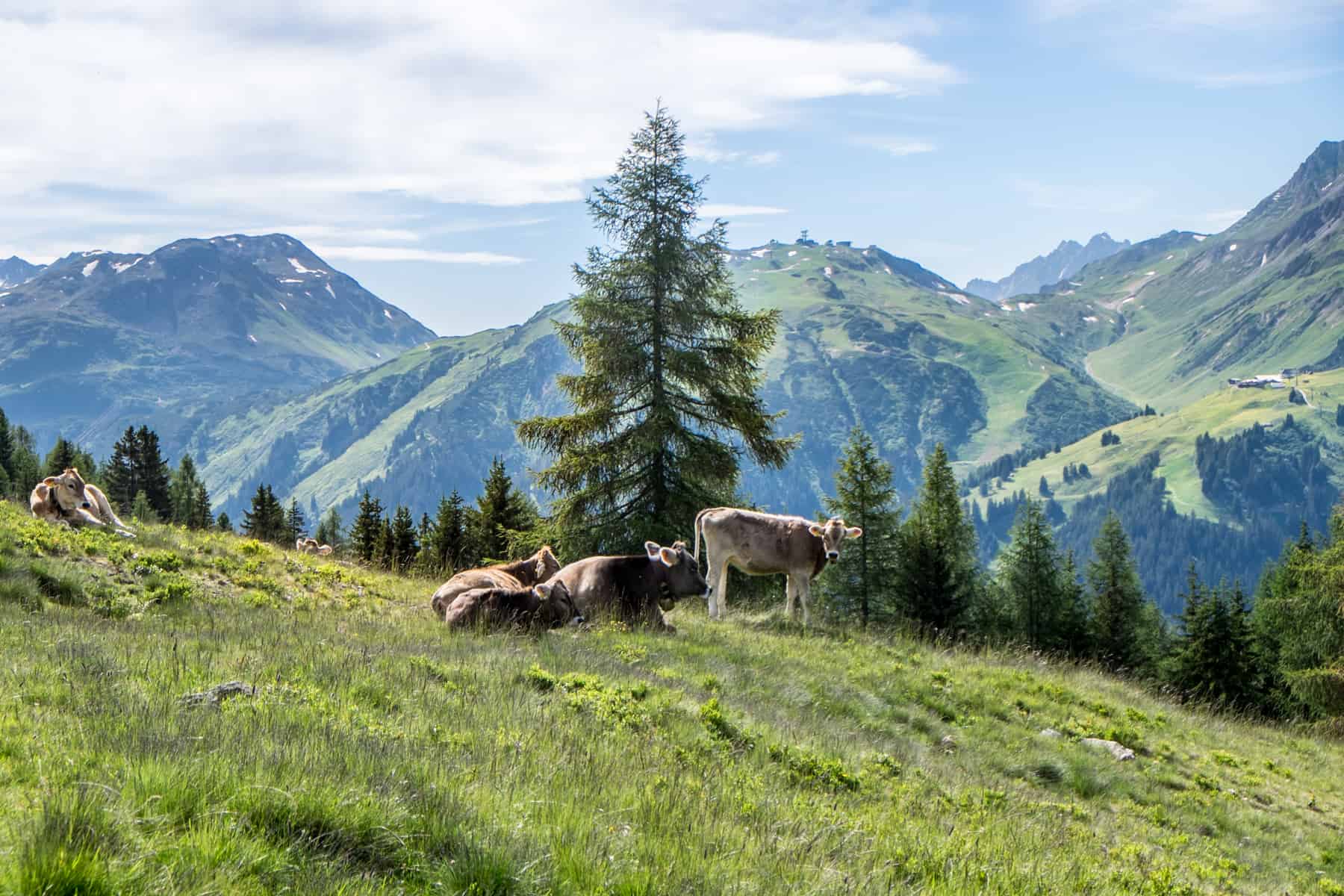
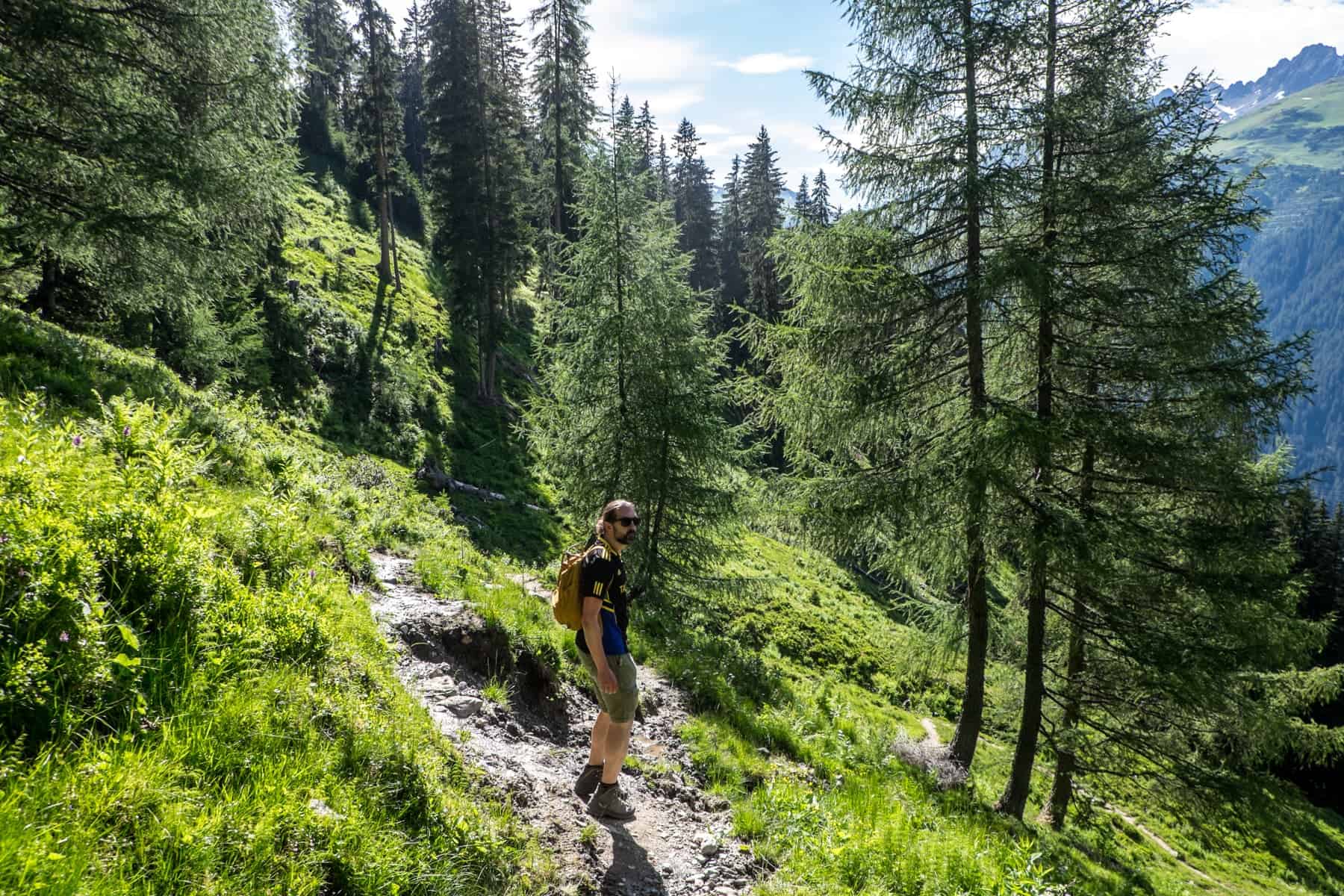
Enjoy St. Anton Town
St. Anton is known for its winter-time après ski gathering of life and party. Still, it’s a small enough village to wander and seek out the old traditional architecture that exists here, like the former train station and old wooden houses, and relax in some of the local bars for a sundown drink after the long hikes. You can find these hamlets of original village charm amongst its modernisation.
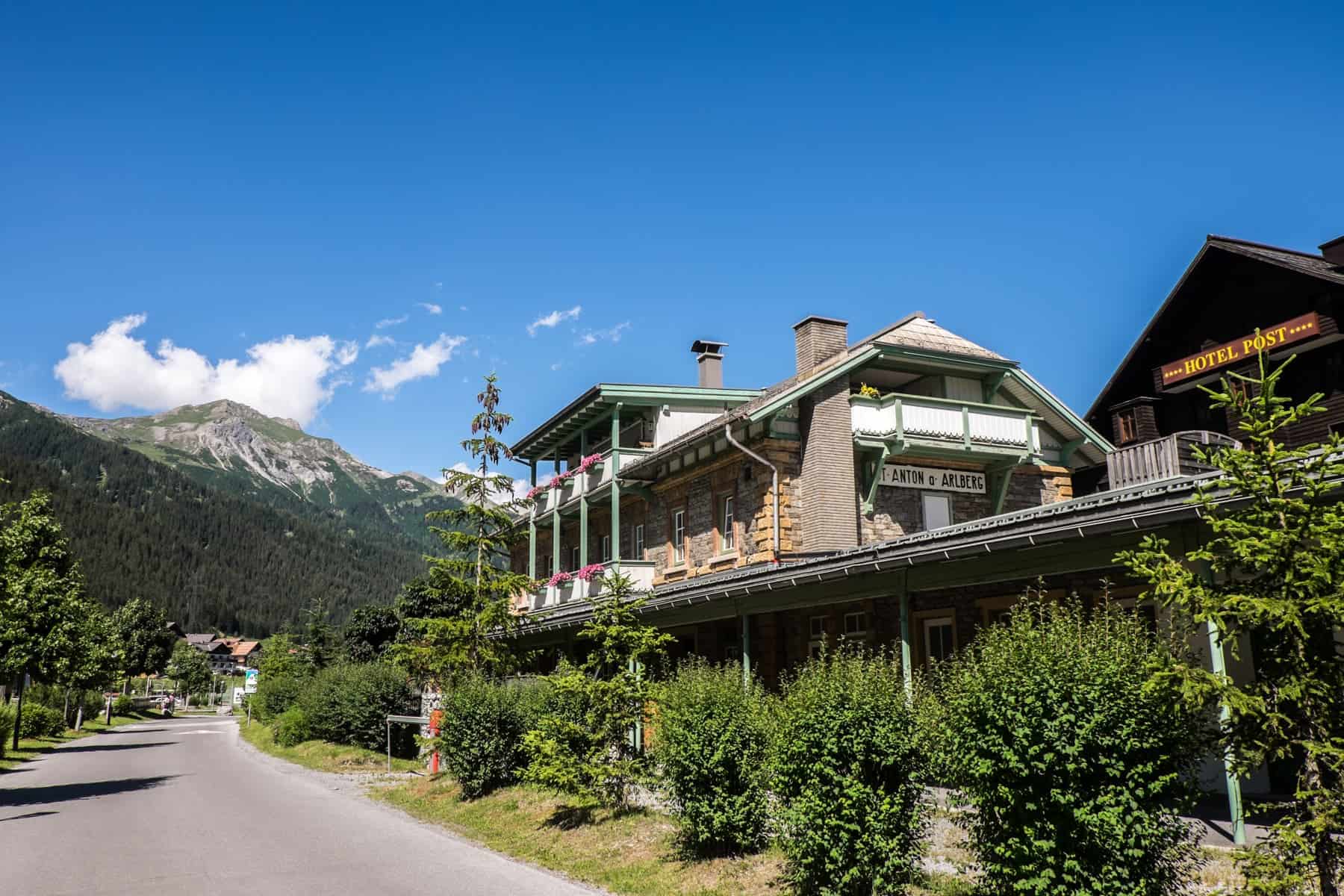
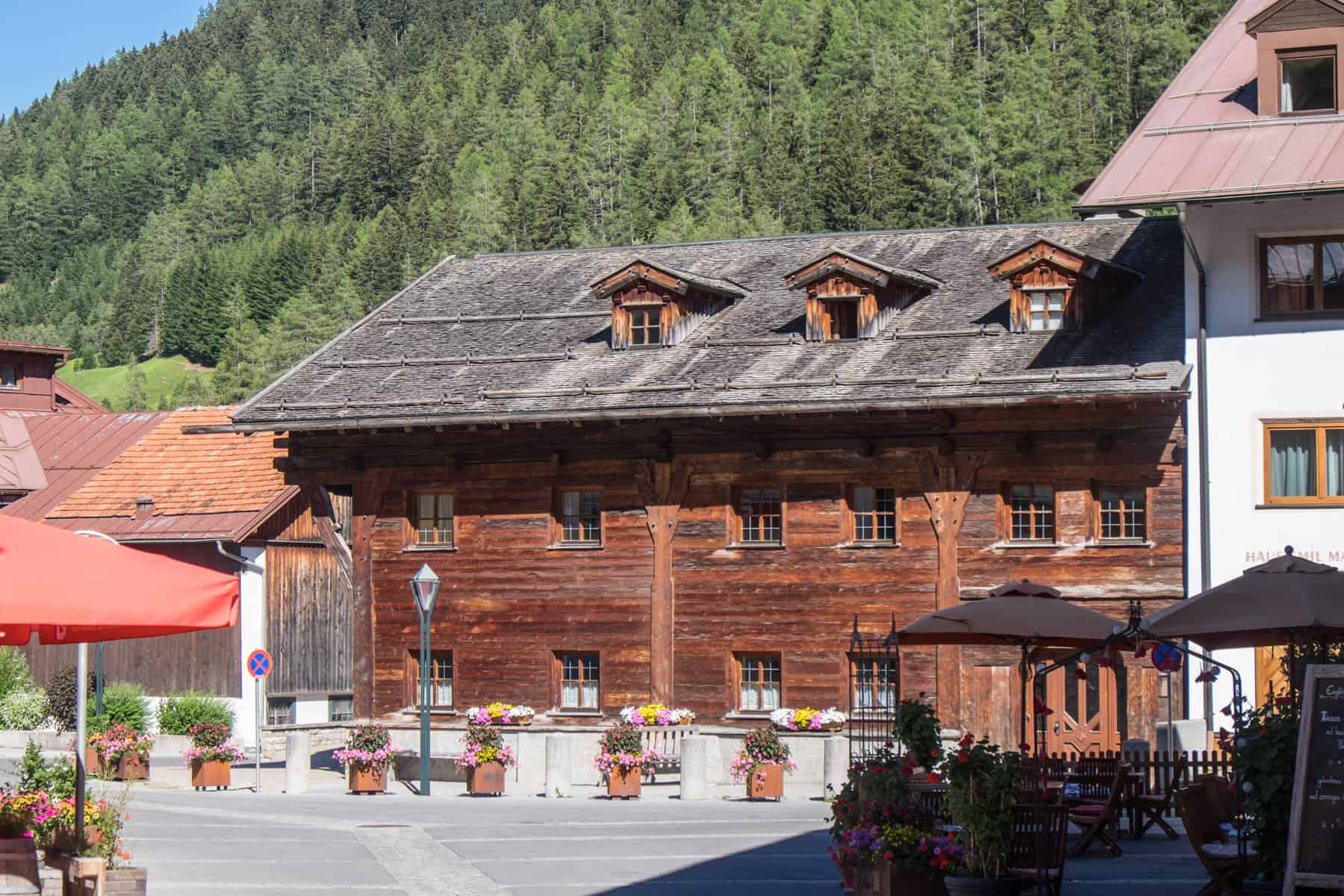
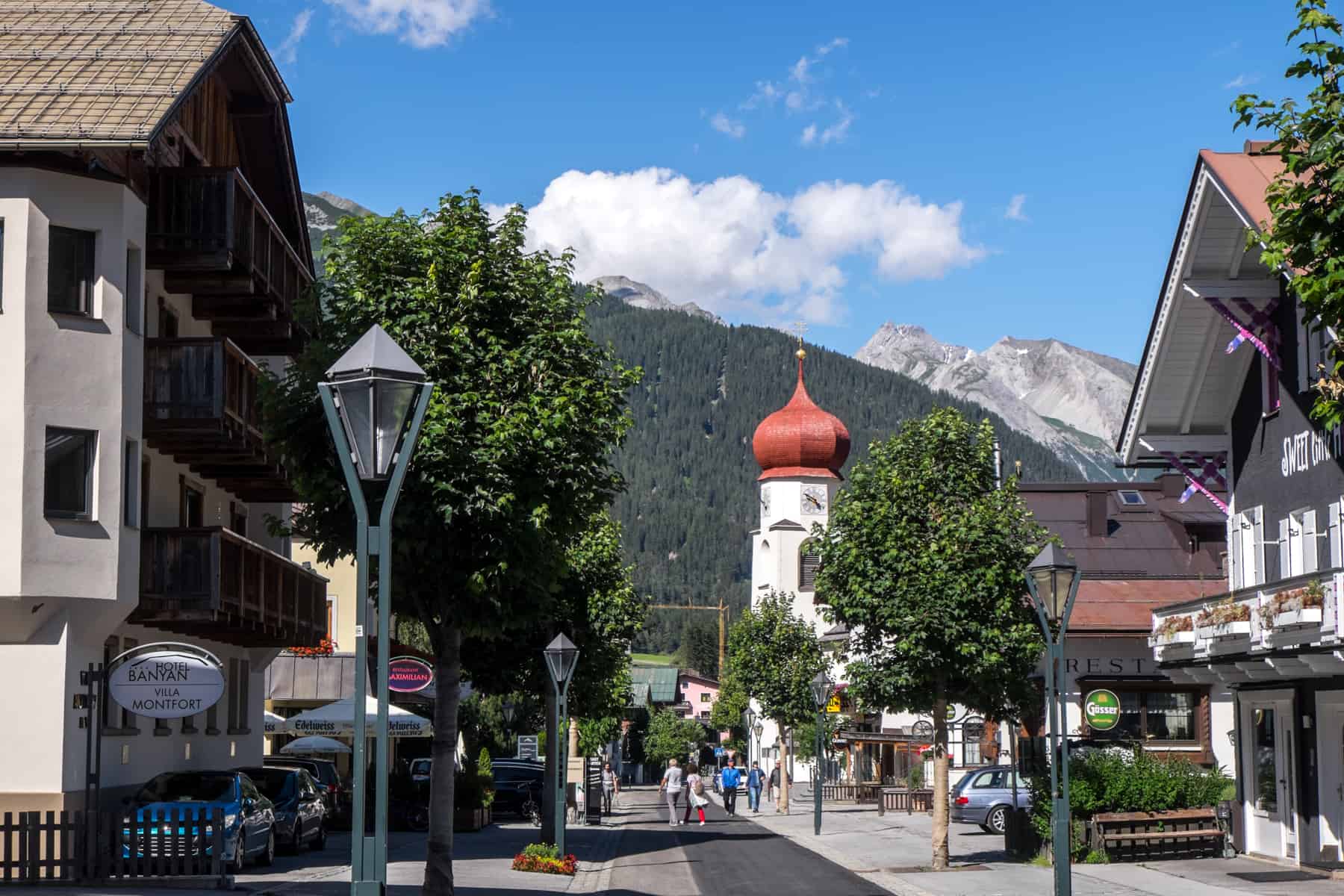
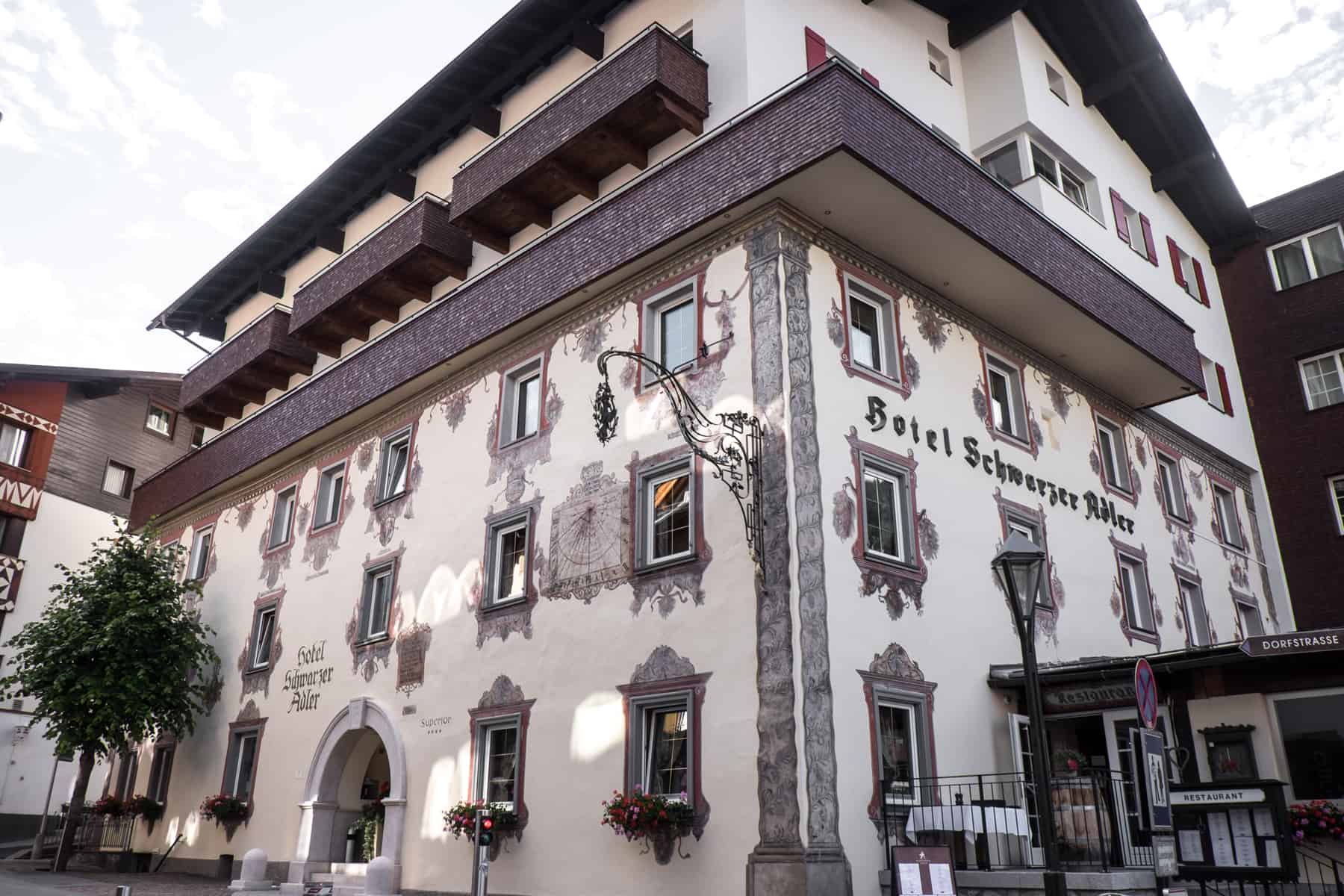
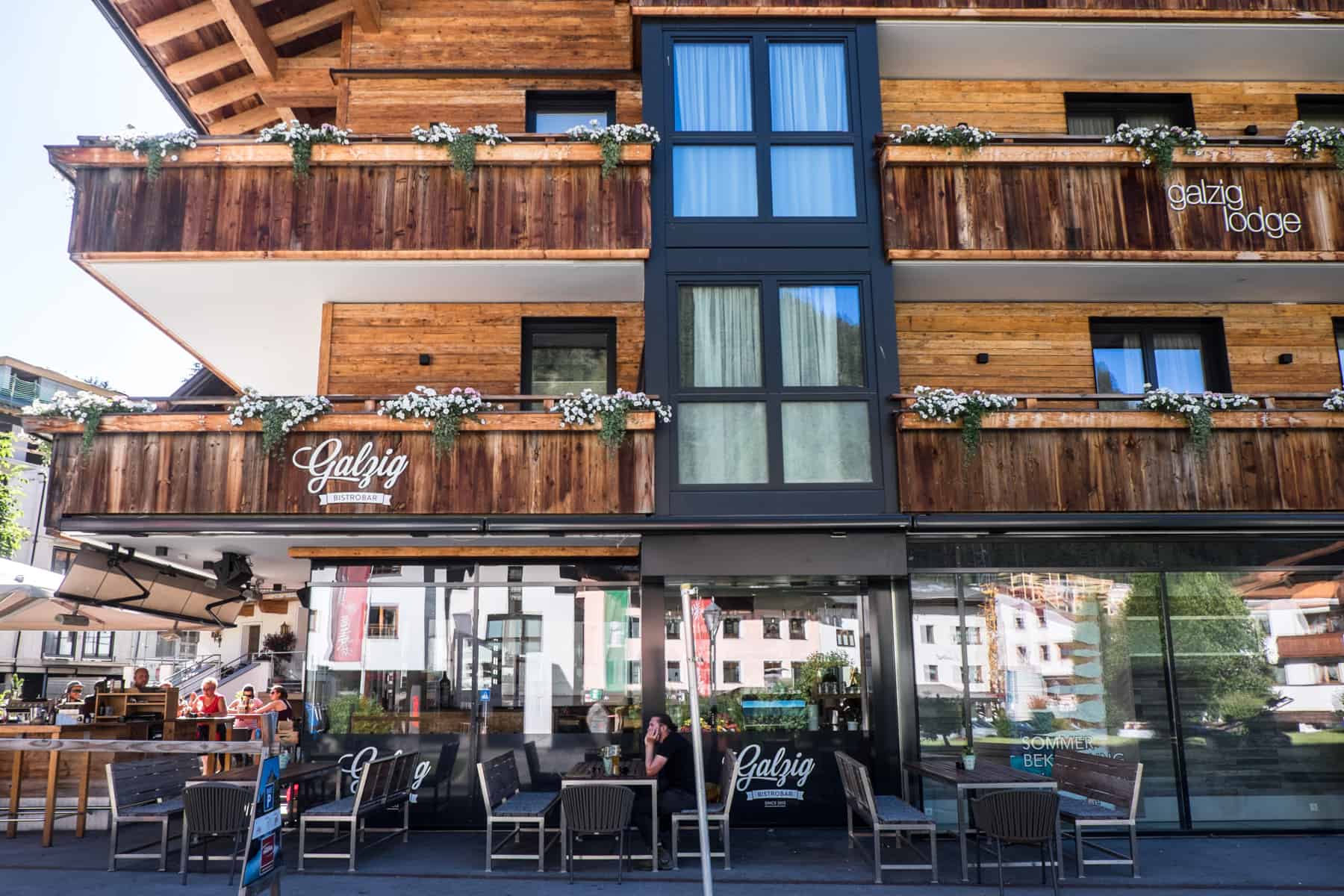
The village is also a hub of wellbeing, with Arlberg WellCom centre, swimming baths and indoor climbing centres. In recent years it has become renowned for yoga and is also home to the International Mountain Yoga Festival, where sun salutation sessions are up high with an alpine backdrop.
To dig deeper into the history of St. Anton, you can visit the museum set within the 100-year-old Villa Trier, passed down between owners over the last century. It eventually came into the hands of the tourism association who have kept it as part of the preservation of the village legacy. With a permanent exhibition and surrounding nature space, it’s one place I wish I had extra time to visit.
Things to Know About Summer in St. Anton
Where is St. Anton? One Valley, Four Villages
The tourism region of St. Anton am Arlberg is comprised of the four alpine villages of St. Anton, Pettnau, Flirsch and Strengen. This cluster of villages sits within the Stanzertal Valley, between the Lechtal Alps and the Verwall Alps.
St. Anton is the largest of all four villages.
How to get to St. Anton
The St. Anton am Arlberg train station sits right outside the village of St. Anton, making it one of the most accessible alpine villages. You simply disembark the train, cross the main road, and you are right in the centre of town.
The ÖBB Railjet station now has seven direct connections a day to Vienna and Zurich, as well as connections across Austria, and to reach other regions of Tirol. You can find timetables and purchase train tickets here.
St. Anton Summer Card (Sommer-Karte)
Hotels and accommodations will provide you with a St. Anton summer card for a one-night stay between July and October. It includes free and discounted activities in St. Anton am Arlberg and the other neighbouring Stanzertal Valley mountain villages of Pettnau, Flirsch and Strengen.
Benefits of the card include one-day unlimited use of all cable cars and the local bus services, use of an e-bike for two hours, admission to the museum, archery and yoga sessions and entry to swimming pools and wellness areas. The full list of card benefits is listed here.
St Anton Premium Card
The upgraded summer card gives unlimited access to cable cars, attractions and services for 3,5 or 7 days – a cost-effective addition if you are staying in the area for multiple days.
3 Days – €55
5 Days – €66
7 Days – €77
Where to stay in St. Anton
A village focused on tourism; there are plenty of accommodation options for all manner of budgets, with many people also opting for hotels in neighbouring Pettnau.
We stayed at the new M3 Lifestyle hotel in St. Anton that’s right in the heart of the village and on one of the main pedestrian streets. On a half board basis, we got to sample the menu of the M3 Restaurant, Hazienda serving gourmet dishes of international flair.
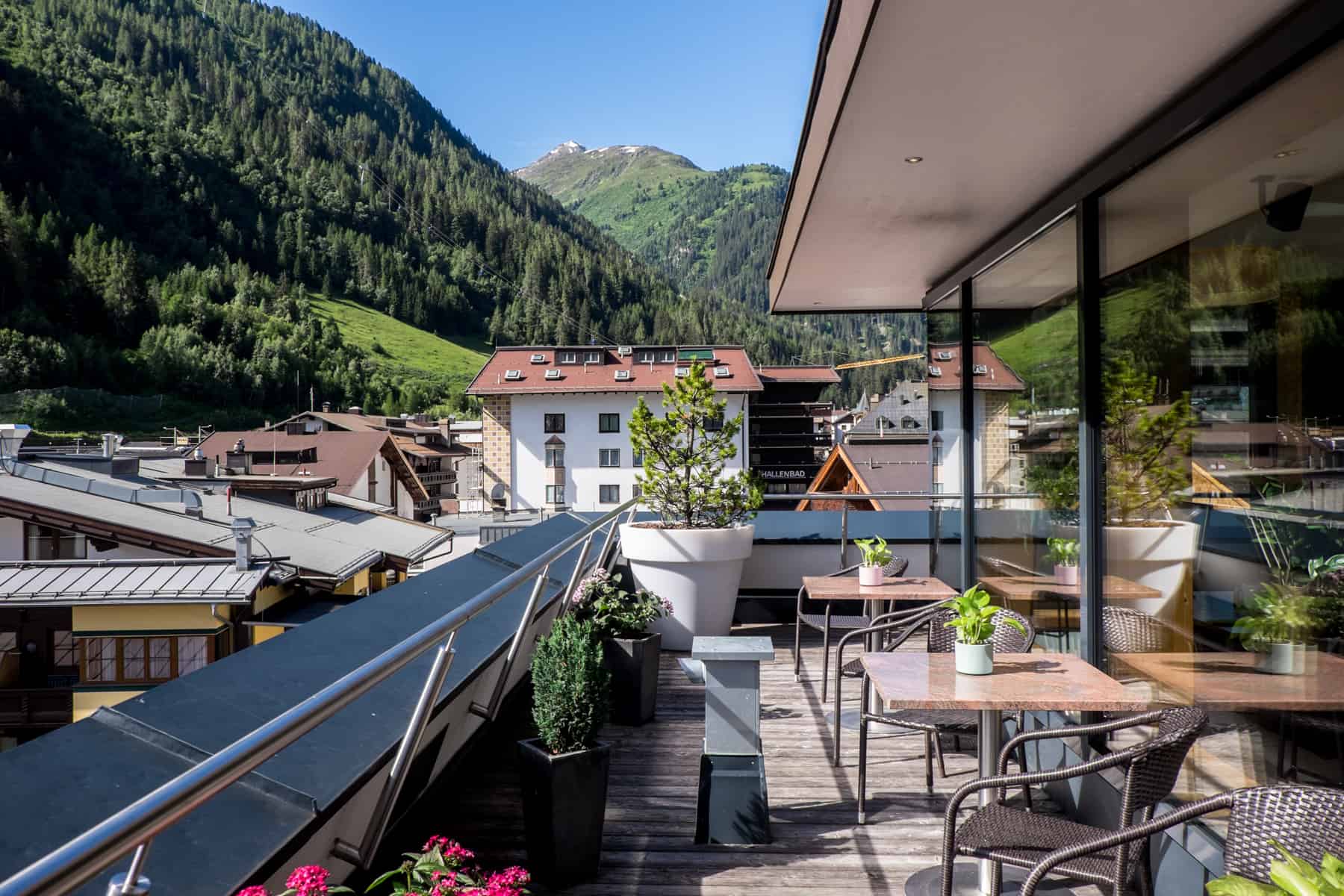
Booking Adventure Activities in St. Anton am Arlberg
If mountain biking isn’t enough to meet your adrenalin needs, H20 Adventure also organises rafting, kayaking and canyoning trips on the valley’s white waters and within its deep canyons and gorges. There’s even a Flying Fox zipline over Rosanna Gorge.
Extra Trips from St. Anton
Visiting Pettnau
Next on our list when returning since we only spent 30 minutes there when passing through, St. Anton’s neighbouring village of Pettnau retains more tradition and bygone charm in a quieter setting. Together with its sub-hamlet Schann, it forms the second largest community after St. Anton and is home to Austria’s last cowbell Blacksmith.
Historical Gand
Gand in St. Jakob (the easternmost settlement of St. Anton) is a former mining area of the Stanzertal Valley from the 15th and 16th centuries. A long-forgotten area, part of the two-tunnel system, and three show huts form a part of a 750-metre Bergbau Gand circular hiking trail.
Further Information on Planning a Trip to St. Anton
For a preview of the region in real-time, check out the St. Anton webcams. Our hotel showed these on a TV screen at breakfast, which was a means to check weather conditions and the viewpoints before setting out.
For interaction maps, videos, and further information on activities visit the St. Anton tourism website.
Further Reading on Austria Ski to Summer Destinations
Living in Austria, I get to see a lot of destinations in different seasons. I have spent time uncovering Austria ski resorts in the summer as they change up the mountain activity offerings.
Read more on:
- Lech in Summer – The Green Jewel of Austria After Ski Season
- Alpbach in Summer – The Famed Tyrolean Valley in a Different Season
- Wildschönau in Summer – Alpine Views and Adrenalin Skies
The post Things to do in St Anton in Summer – Redefining Austria’s Birthplace of Alpine Skiing appeared first on Borders Of Adventure.
from Borders Of Adventure https://www.bordersofadventure.com/things-to-do-in-st-anton-in-summer/
VietNam Travel & Food Magazine Vina.com offers News✅ Travel info✅ Food Recipes✅ Photos✅Restaurant Guide at Vina.com https://vina.com/travel/nightlife/ https://vnfoodandtravelblog.blogspot.com/

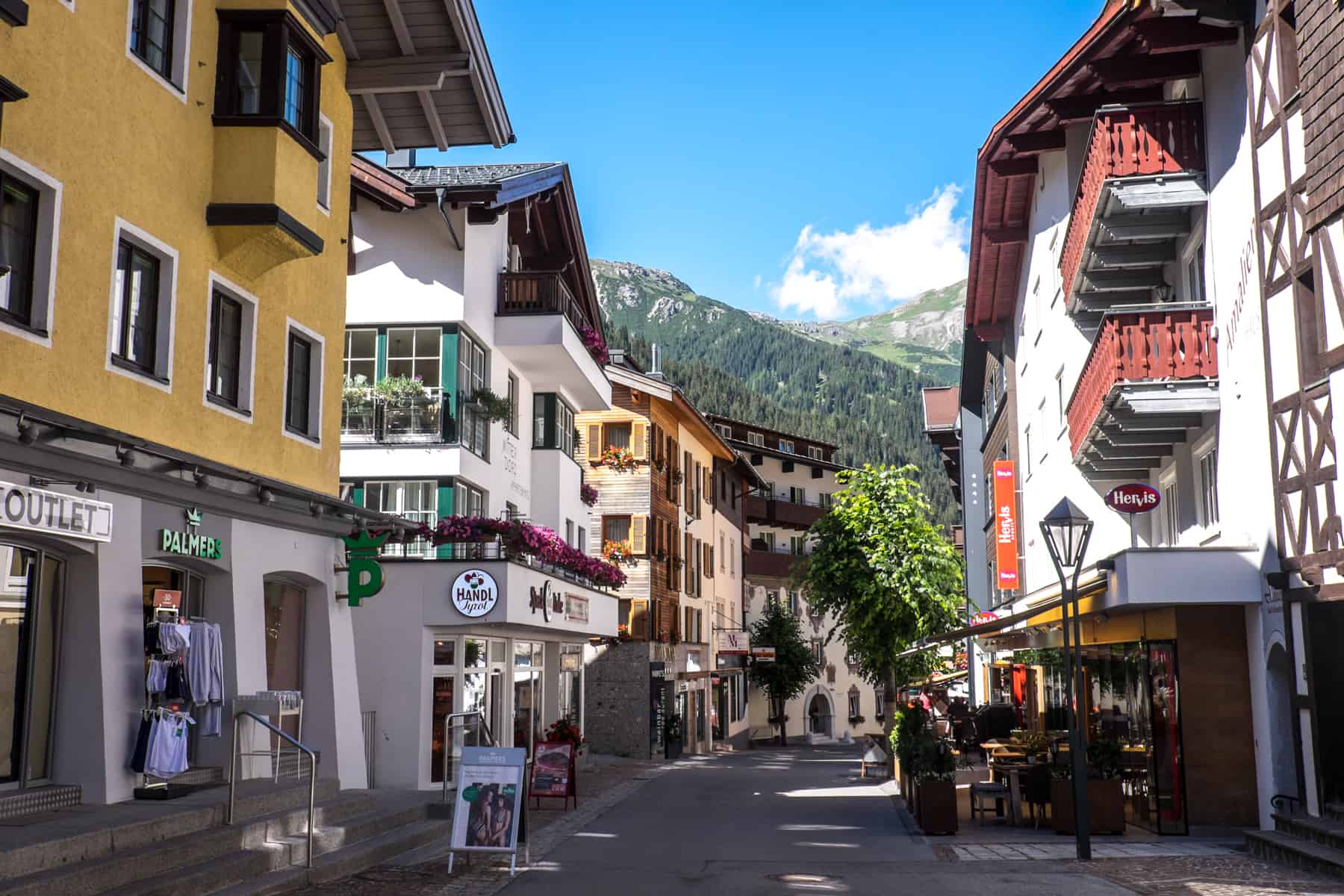
0 Nhận xét